Pompeii is one of the most well-known archaeological sites in Italy, and a popular attraction for visitors. We’ve visited Pompeii a number of times over the years, (Laurence first visited in 1995) and in this guide we’re going to share everything you need to know to plan your own visit to Pompeii.
There’s a lot to see and learn about at Pompeii, and there are also various options for visiting. You can take a guided tour or do a self-guided visit, and there are also various transport options for getting to Pompeii from different locations in Italy, including Rome, Naples and the Amalfi Coast.
In this guide we’ll cover everything you need to know to visit Pompeii, from getting to Pompeii, to which tours are worth it, to other sights in the area, and lots more. Let’s get started with some background.
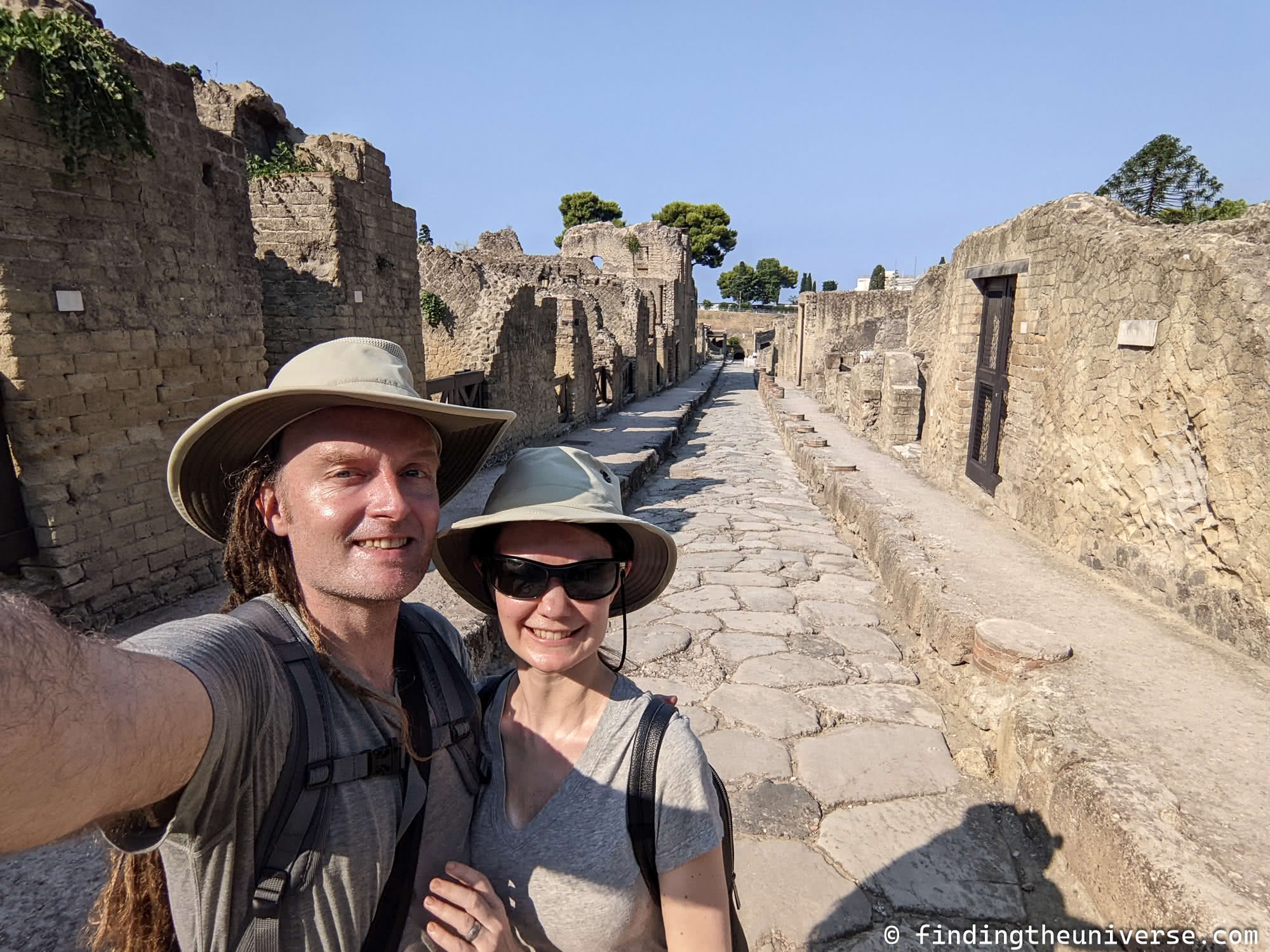
What is Pompeii?
In AD 79, Pompeii (Pompei in Italian) was a relatively large and successful town in the Roman Empire, home to between 10 and 20 thousand people.
That all came to an end in the autumn of 79 AD when the nearby Mount Vesuvius volcano erupted. This had catastrophic consequences for the surrounding towns and villages.
Within 24 hours of the eruption, the massive amount of ash and pumice produced by the volcanic eruption had covered the towns in the region to a depth of 13 – 20 ft (4 – 6 metres).
Thousands of people who had tried to shelter lost their lives, and the towns were effectively lost to history.
It wasn’t really until the 18th century that Pompeii and neighboring towns such as Herculaneum surfaced back into public consciousness. This was when the first scientific excavations at the site took place.
In the following centuries, huge efforts were taken to reveal the hidden city, efforts that continue today.
Pompeii effectively serves as a snapshot of a Roman town at the height of the Roman Empire. The volcanic eruption was so violent and quick that a great many inhabitants perished, with their bodies trapped in the ash. Plaster casts of the imprints these bodies left behind are an image that is inextricably linked with Pompeii.
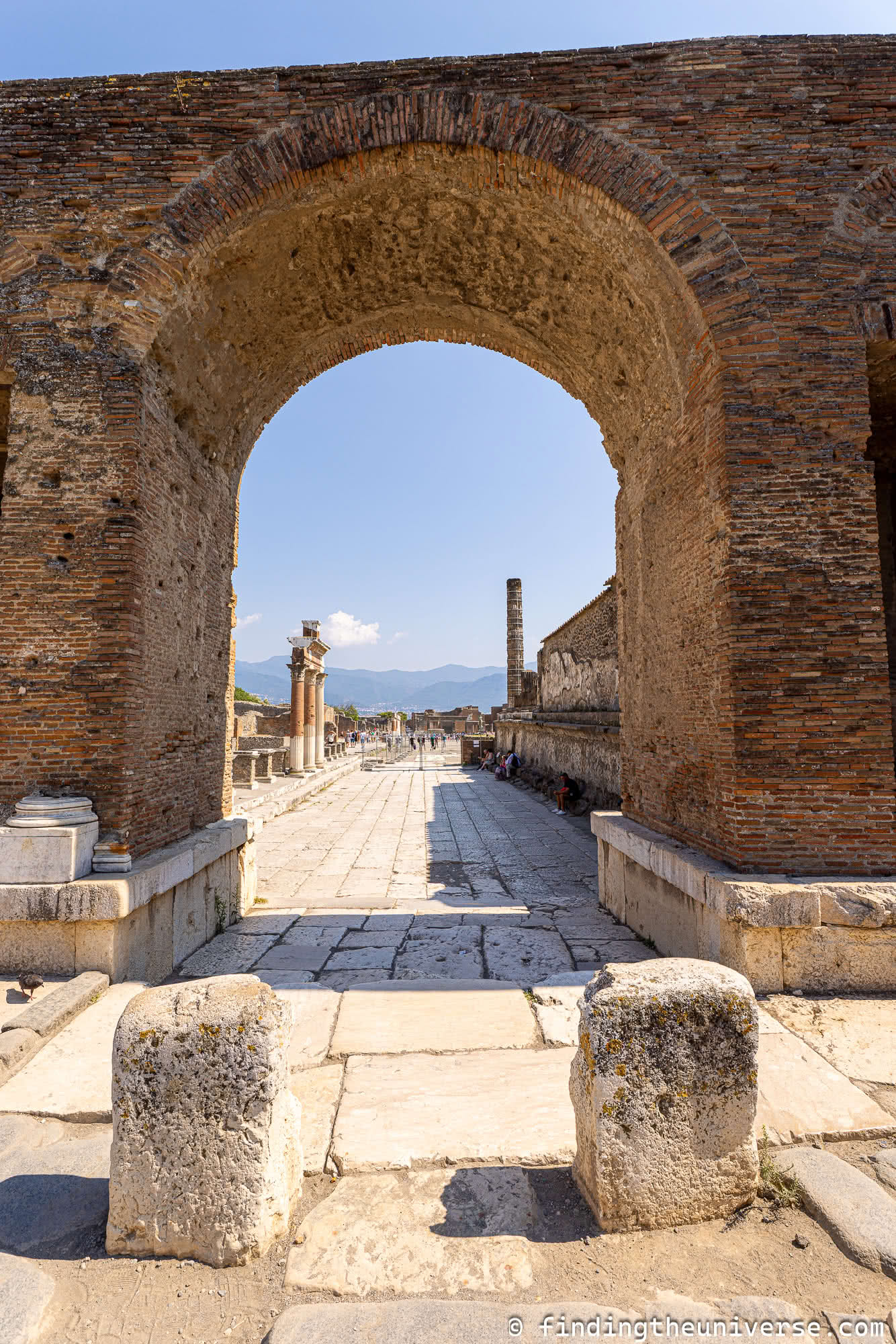
Planning your Visit to Pompeii
I’ll now go through some helpful information to help you plan your trip to Pompeii, from how to get here to where to buy tickets and lots more.
Where is Pompeii?
Pompeii is found in the Campania region of Italy at the southern end of the Bay of Naples. It’s around 27km (16 miles) to the southeast of Naples, or approximately a 30-minute trip by car, bus or train.
It’s around 250km (155 miles) south of Rome, or approximately a three-hour journey by car, bus or train.
It is possible to visit Pompeii as a day trip from both Rome and Naples, options I will cover below.
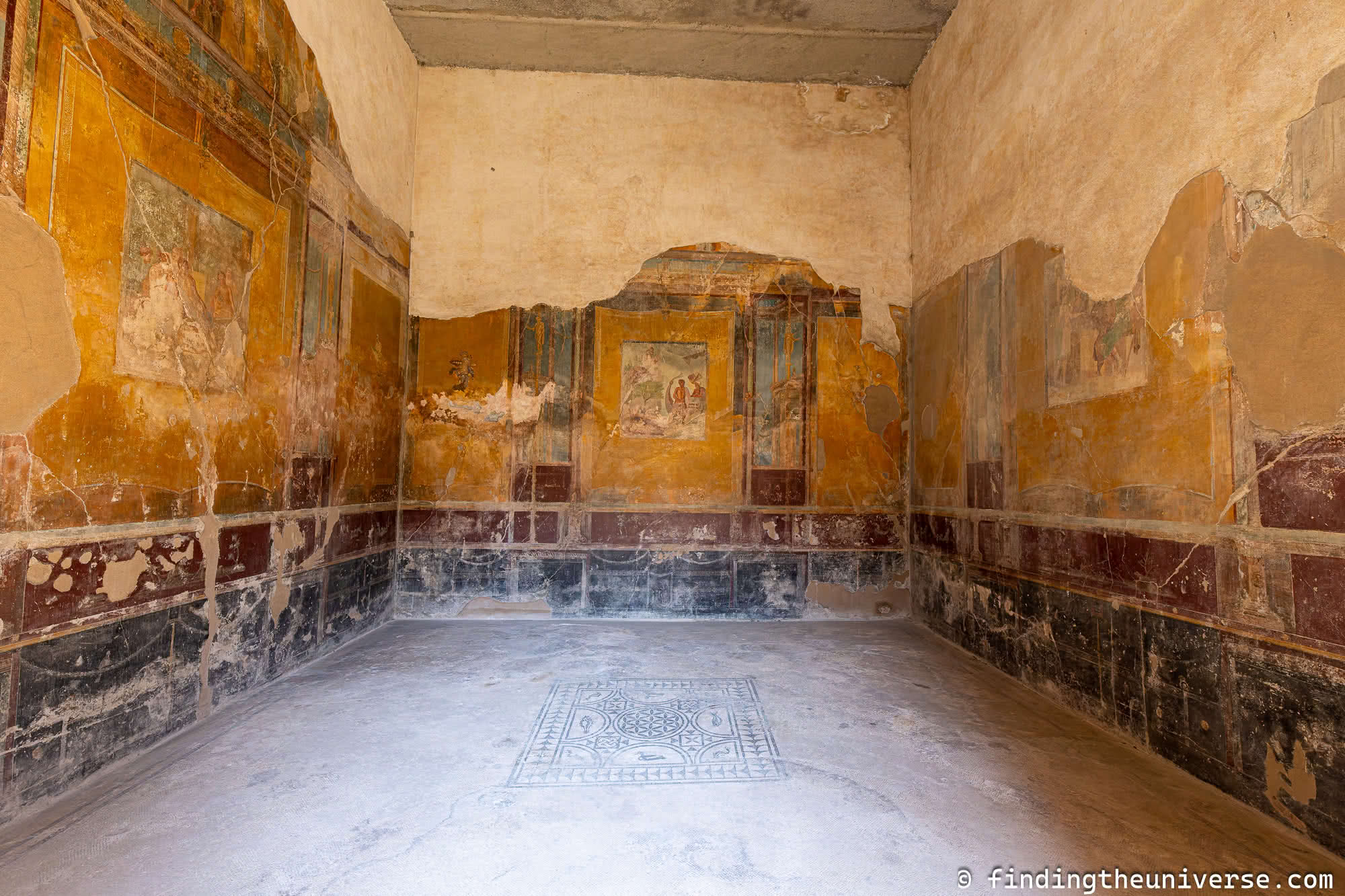
How to get to Pompeii?
Pompeii is relatively easy to reach, with good transport connections from various locations in Italy. We’ll go through the options for visiting Pompeii from some of the more popular departure points.
How to get to Pompeii from Rome?
It is possible to visit Pompeii as a day trip from Rome as long you are prepared for a long day with a fair bit of travel time. You’re generally looking at around 2.5 – 3 hours of travel time each way from Rome to Pompeii.
The main options you have are to drive, take public transport, or take a guided tour.
Drive from Rome to Pompeii
Unless you are planning on taking a road trip in Italy and continuing on after Pompeii, we’d suggest taking public transport or a tour rather than driving.
If you drive, you’ll have to go through the hassle of finding and renting a car, dealing with traffic around Rome, navigating, and paying tolls and gas.
Taking public transport or a tour is going to be a lot easier.
Public Transport from Rome to Pompeii
For public transport, you can take an express train from Rome to Naples Central train station. Then, from Naples you can take a local train to Pompeii.
See details below in the section on getting from Naples to Pompeii for how to do this.
Tours from Rome to Pompeii
Our recommended way for getting from Rome to Pompeii as a day trip is to take a guided tour. This will make your day a lot more relaxing as you won’t have to worry about logistics.
You’ll also have a better time at Pompeii with a professional guide to explain what you are seeing. There are a number of tour options to Pompeii from Rome, some recommended options are as follows.
- This day trip from Rome to Pompeii is with Take Walks. We’ve taken tours with them all around the world, including a tour of Pompeii, and always had a good experience. The tour includes round-trip transport from Rome, a drive along the Amalfi coast and time in Positano or another Amalfi coast town
- Another day trip from Rome to Pompeii with Take Walks, this one includes a vineyard visit with lunch and wine tasting
- This tour with City Wonders has you visiting Pompeii and also hiking up Mount Vesuvius. Lunch is also included.
- This tour from Rome has you visiting Pompeii as well as Sorrento on the Amalfi coast
- This full day private tour from Rome includes round trip transport to Pompeii and time in Positano. Note that entrance tickets to Pompeii are not included. This is a similar private tour which includes entrance tickets, lunch and a winery visit.
When comparing tours and prices, always check how much time is actually spent at the various sights, as well as group size and what is and isn’t included.
Paying a little extra for a tour that includes more might work out more cost effective!

How to get to Pompeii from Naples?
There are multiple options for getting from Naples to Pompeii. You can drive, take the train, take a shuttle bus, take a train, or take a tour.
Drive from Naples to Pompeii
The drive from Naples to Pompeii is around 30 minutes via the A3 toll road, and there is paid parking on site.
This is going to be an option to consider if you already have a car rental for your trip in Italy, but we’d not recommend renting a car specifically for this journey as the other options are likely going to be easier.
Shuttle Bus from Naples to Pompeii
A really easy option for getting from Naples to Pompeii is to take the dedicated City Sightseeing bus. This departs from central Naples and takes you directly to the ruins.
The journey takes around 40 minutes depending on traffic, and you get around 4 hours on site. Note that you have to book a specific departure time, which ties you to a specific return time, you can’t choose to stay longer and come back on a later bus.
4 hours should give you enough time to see a lot, but if you wanted to spend longer on site then this might not be the best option.
Find out more and book tickets for this experience on GetYourGuide here.
Train from Naples to Pompeii
There are two direct train options for getting from Naples Central train station to Pompeii.
First, you need to be aware that Pompeii itself has a couple of train stations. When taking the train to the Pompeii historical site you want to get off at Pompeii Scavi-Villa dei Misteria Station as this is the one directly by the ruins.
Direct trains from Naples to Pompeii all depart from the Garibaldi train station, which is (a little confusingly) located directly underneath Naples Centrale train station.
The cheapest train option from Naples to Pompeii is the Circumvesuviana service. This regional commuter train system runs trains all around the area, and you will want to take a train which is heading to Sorrento.
Tickets can be purchased at the station, and there are normally a few trains every hour. Journey time to Pompeii is around 35 minutes. You can see train times on the official website here (Italian only).
A slightly more expensive, but generally more comfortable train option, is the tourist-oriented Campania Express train. This also operates from Garibaldi train station and takes you directly to the ruins.
Trains run less frequently and cost more, but are less crowded and more comfortable.
See timetables and buy tickets with seat reservation for the Campania Express train online here. Tickets are also available in person.
Note that Trenitalia runs trains from Naples central train station to Pompeii, but these go to the main train station in Pompeii rather than the station by the ruins.
It’s possible to take a shuttle out to the ruins or walk (20 – 30 minutes), but honestly, we’d recommend taking one of the other options as it’s going to be easier. You won’t be having a shortage of walking when you’re on site!
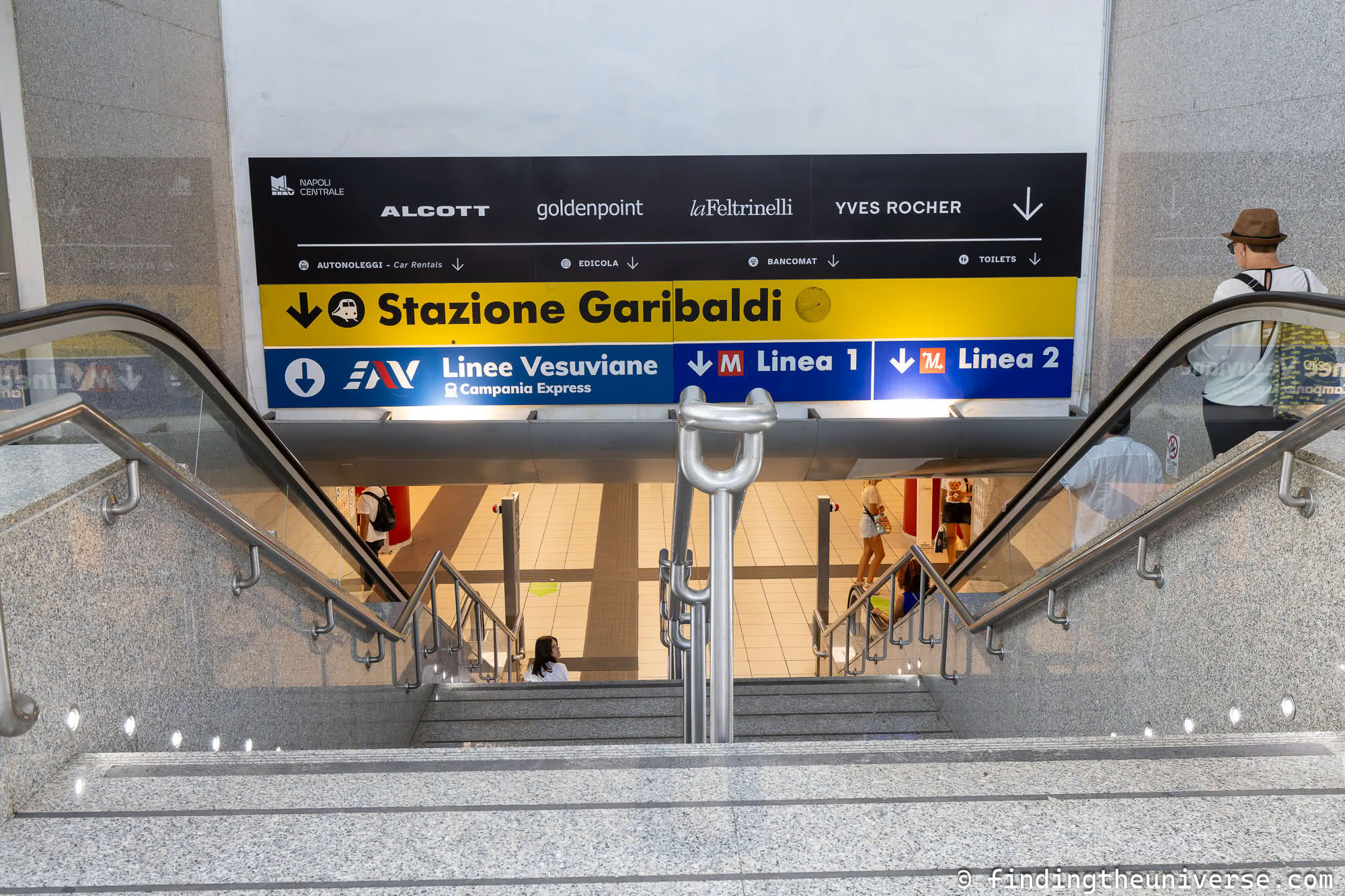
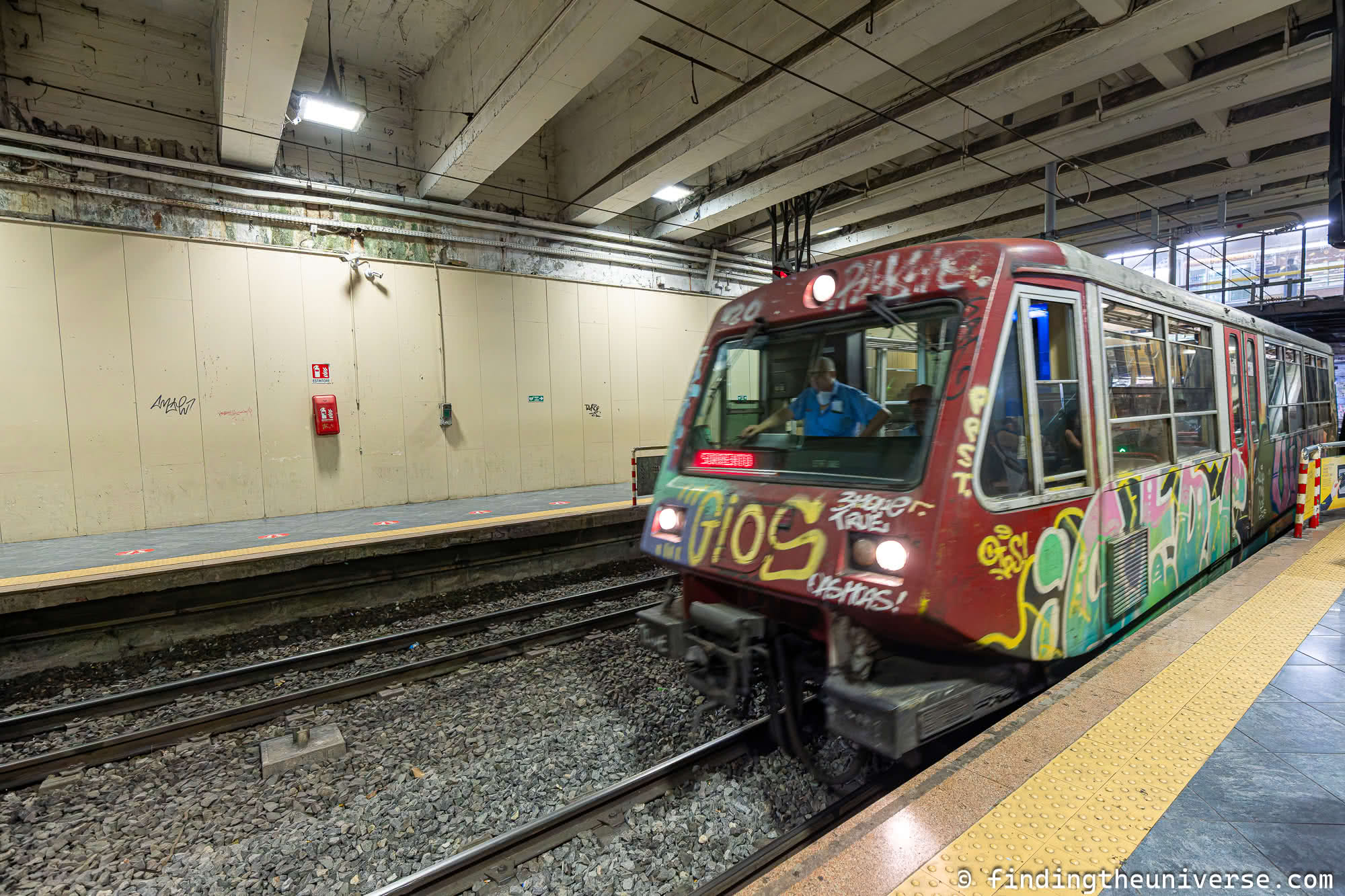
Tours from Naples to Pompeii
You can also book a tour to Pompeii which includes round-trip transport to and from Naples. There are quite a few options, with both half-day and full-day tours available.
Most full-day tours include an additional attraction or two such as a visit to Mount Vesuvius or time on the Amalfi Coast.
Here are some options to consider.
- This full day tour has you visiting Pompeii from Naples on a 2-hour guided tour. It also includes lunch, and time exploring Mount Vesuvius. This is a similar tour.
- This full day tour from Naples visits both Pompeii and Herculaneum, allowing you to see two different locations affected by the eruption
- This full day tour from Naples includes a tour of the Amalfi coast, lunch, and a tour of Pompeii
- This half day tour from Naples includes a 2-hour guided tour of Pompeii
- This half day guided tour from Naples includes a 2.5 hour guided tour of Pompeii
How to get to Pompeii from Sorrento
Sorrento is one of the major towns on Italy’s popular Amalfi coast, a popular and spectacular destination for tourists visiting Italy. Sorrento makes for a good base for exploring the Amalfi Coast.
It’s also easy to get to, being connected by rail directly to Naples. This is on the same train line that goes to Pompeii, meaning you can easily reach Pompeii by train from Sorrento as well.
Here are some options for how to get from Sorrento to Pompeii.
Driving from Sorrento to Pompeii
You can drive from Sorrento to Pompeii, so if you already have your own car rental this is definitely an option to consider. However, you might find taking the train to be just as convenient.
The 28km (17 mile) drive takes around 40 minutes depending on traffic. Just remember you’ll need to pay for parking when you get to Pompeii.
Public Transport from Sorrento to Pompeii
Getting from Sorrento to Pompeii by public transport is easy. There is a regular train service from Sorrento to Naples, which stops at the Pompeii Scavi train station. This is right by the Pompeii site entrance.
Tickets can be purchased at the station, and there are normally a few trains every hour. Journey time to Pompeii is around 45 minutes. You can see train times on the official website here (Italian only).
Tours from Sorrento to Pompeii
You can also take a guided tour from Sorrento to Pompeii. These tours generally include round-trip transfers, and a guided tour of Pompeii lasting 2-3 hours.
Tours then differentiate by other additions such as lunch, and other destinations like Mount Vesuvius or Herculaneum.
Note that not all tours include your Pompeii entrance ticket, and any additional sights may have additional ticket requirements, such as Mount Vesuvius and Herculaneum. So always check what is and isn’t included before booking anything.
Here is a selection of tours from Sorrento to Pompeii to consider.
- This full day tour from Naples or Sorrento includes a guided tour of Pompeii, Pompeii entrance ticket, a visit to Mount Vesuvius with ticket included, and time for lunch (not included).
- This is a full day tour from Sorrento which visits Pompeii (entrance fee not included but guide provided) and Mount Vesuvius (park entry not included). Lunch is included.
- If you’re looking for a shorter day out, this is a half day trip from Sorrento which just visits Pompeii from Sorrento. You get a 2.5 hour guided tour and your Pompeii entrance is included.
- This full day trip from Sorrento visits both Pompeii and Herculaneum. It includes entrance and a guided tour of both locations as well as a light lunch.
As you can see there are plenty of options. We’d always recommend comparing a few different tours to see which suits your requirements and budget, and always check what is and isn’t included when comparing tours as well.
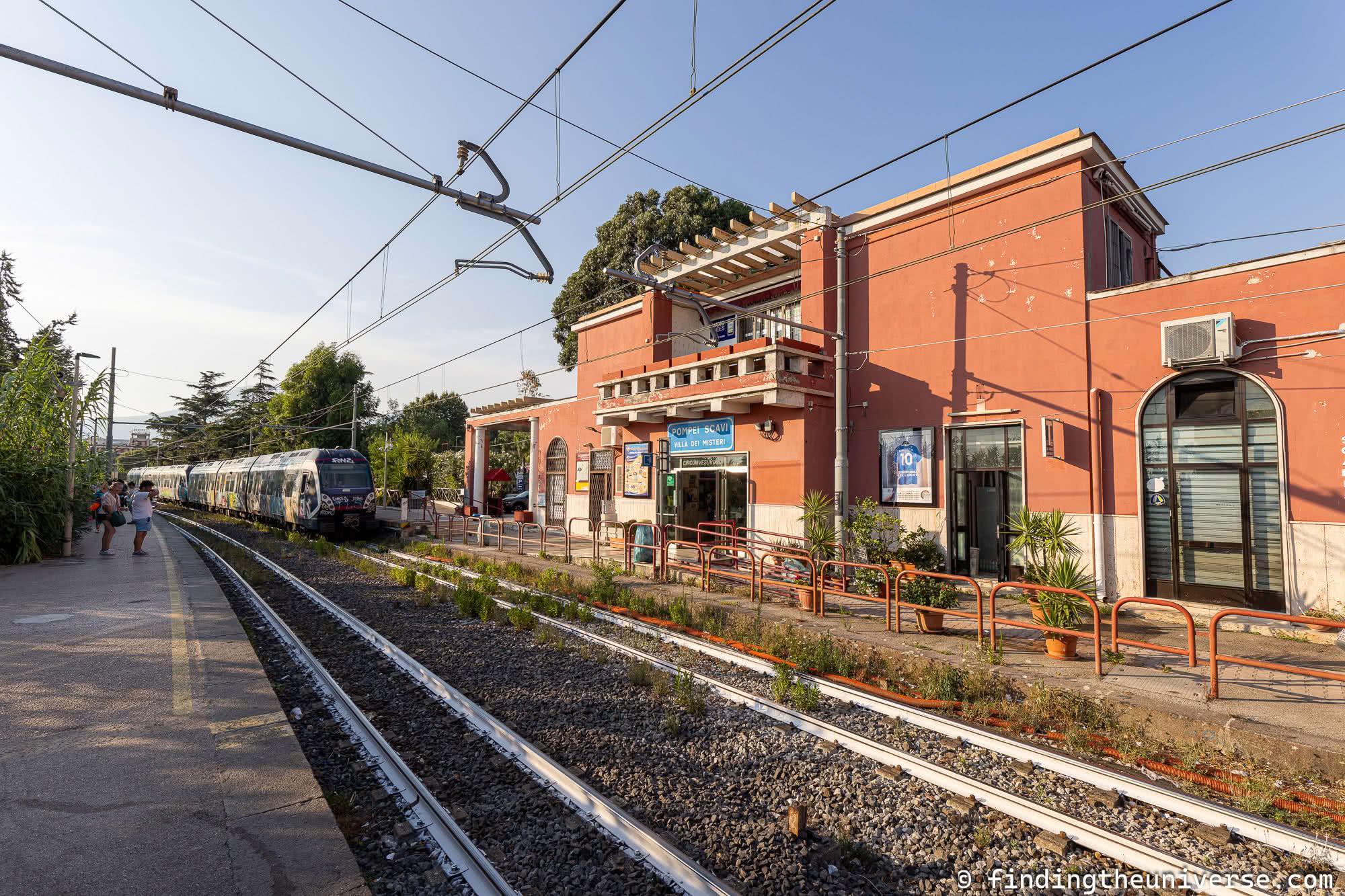
Pompeii Opening Times
Pompeii is normally open year-round with the exception of 25th December, 1st May, and 1st January.
Generally, everything at Pompeii opens at 9am, but closure times can vary. So if you want to see everything, then we recommend visiting in the morning. This is usually also the coolest time of day in the summer months.
The main Pompeii site is open as follows:
- 1st April – 31st October, 9am – 7pm (last entrance 5.30pm)
- 1st November – 31st March, 9am – 5pm (last entrance 3.30pm).
There are also multiple locations across the main Pompeii site such as the Amphitheater, Garden of the Fugitives, House of the Menander etc. which also have opening times to be aware of. You can see those here.
Additionally, there are a number of nearby sites linked to Pompeii which have a last entrance time 30 minutes after the main site last entrance time.
These include Villa Regina, Villa Arianna, Villa San Marco and Villa de Poppea. These locations are all closed on Tuesdays with the exception of Villa Regina.
These extra sites require a specific ticket to access them and you need to take a shuttle bus from the main Pompeii site to reach them, so if you plan to visit these locations you will want to give yourself plenty of time.
You can see more information on opening times as well as any exceptional closure information for Pompeii on the official website here.
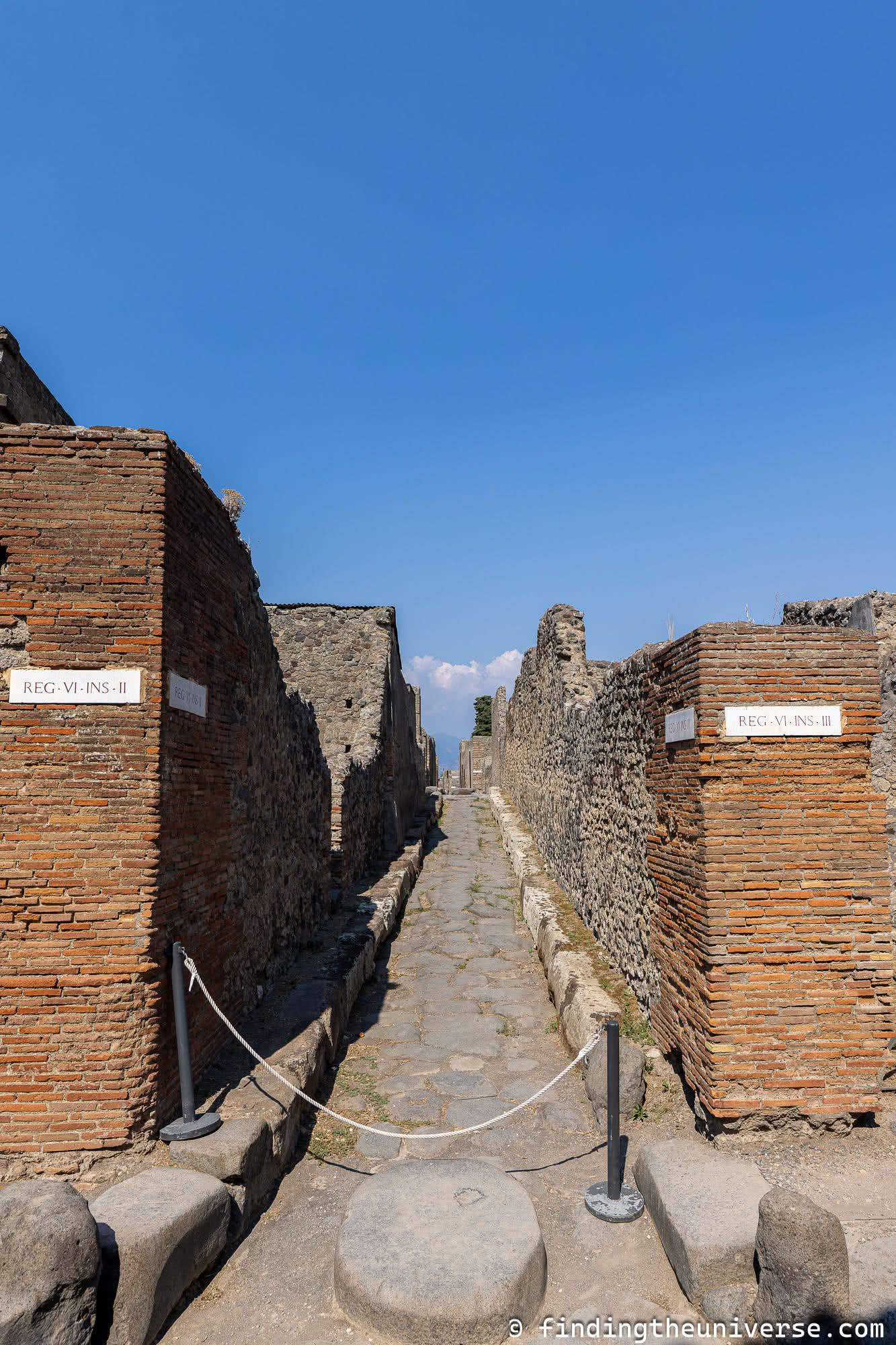
How Long to Visit Pompeii For
There is a great deal to see at Pompeii, however you also have to consider the time of year you are visiting and your personal interest in ancient archaeological sites when deciding how long to visit.
The majority of visitors come for 2 – 3 hours, which is also how long the majority of guided tours are.
If you think you will want to spend more time on site (there is lots to see), then a good option is to take a guided tour that finishes on site, and then explore on your own when the tour is finished. Your tour guide should be able to direct you to particular highlights once the tour is over.
We have done this and it was a great way to learn a lot from a guide, after which we were able to explore on our own at our leisure.
One thing to note, if you are visiting in the summer months it can get very hot here, and there isn’t a lot of shade, so visiting for much longer than 2 or 3 hours can be quite challenging.
However, if you are really keen to explore and spend more time on site, and are either prepared for the heat or are visiting at a cooler time of year, there is certainly lots to see! You could easily spend a whole day exploring Pompeii, especially if you head out to the villas. It’s entirely up to you!
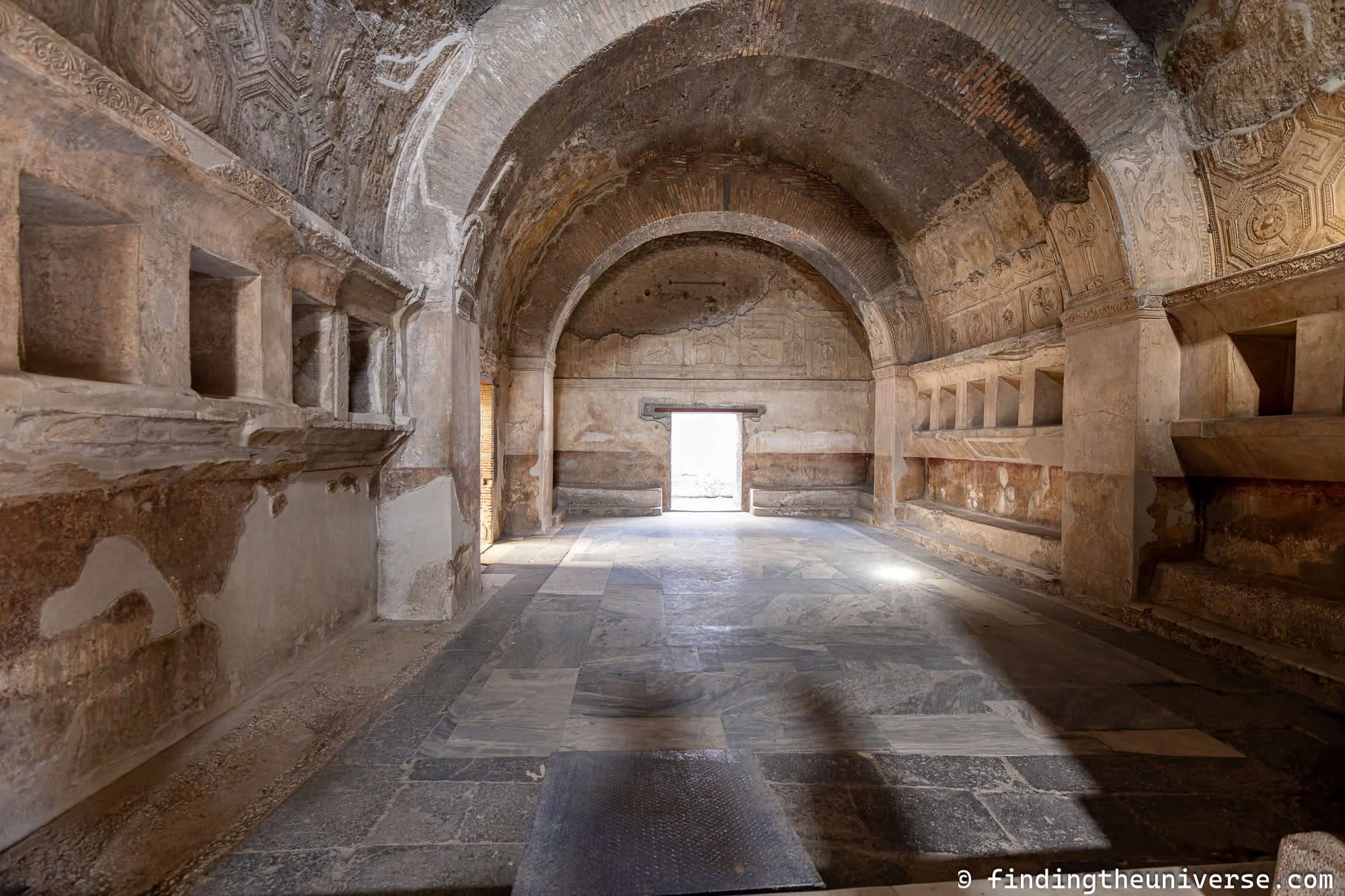
Pompeii Ticket Information
We’ll now cover ticketing information for Pompeii, including ticket types and costs, discounted tickets, where to buy tickets and more.
Do You Need a Ticket for Pompeii?
Yes, all visitors need a ticket for Pompeii, even those eligible for free and discounted entry.
You can purchase tickets online in advance or in person on site.
How Much does it Cost to Visit Pompeii?
There are a number of ticket options for Pompeii, depending on what you want to see. These are as follows. Prices are correct as of August 2024.
- Pompeii Express ticket. The basic ticket which gives access to the ancient city of Pompeii. Ideal for most visitors looking to explore the main site. €18 + €1 booking fee on the official ticket site. Also available on GetYourGuide here with free cancellation and optional audioguide.
- Pompeii+ ticket. This ticket gives access to the main site as well as the following suburban villas (reached by a free shuttlebus): Villa of the Mysteries + Villa of Diomedes + Villa Regina in Boscoreale with Antiquarium. €22 + €1 booking fee on the official ticket site. Also available on GetYourGuide here with free cancellation and optional audioguide.
Tickets are for adults 18 and over only. Children under 18 have free entry, although they do still require a ticket which can only be collected in person at the ticket office.
If you arrive at Pompeii with an Express ticket and decide you want to visit the villas, it is possible to purchase a ticket upgrade for €8 at the Herculaneum Gate – Street of the Tombs entrance. This only accepts card payment.
Are there Discounted Pompeii Tickets?
Yes, discounted Pompeii Tickets are available.
EU citizens between the ages of 18 and 24 inclusive with ID can enter the park for €2.
All children under 18 get free entry to Pompeii, although they still require a ticket.
There are currently no discounts for seniors.
Where to Buy Pompeii Tickets
You have a number of options for purchasing Pompeii tickets.
In person
First, you can buy tickets for Pompeii on-site at Pompeii itself. There are ticket offices at the three main entrances: Porta Marina, Piazza Anfiteatro and Piazza Esedra.
We’d generally advise against this where possible as you might end up standing in line for a while, but it is an option.
If you under 18, an EU resident aged 18-24, or fall into another category for reduced price tickets, then you will need to visit the ticket office for your ticket.
This is so your qualification for the reduced price ticket can be verified, so be sure to bring any necessary paperwork, such as a government issued Photo ID document (i.e. a passport or ID card).
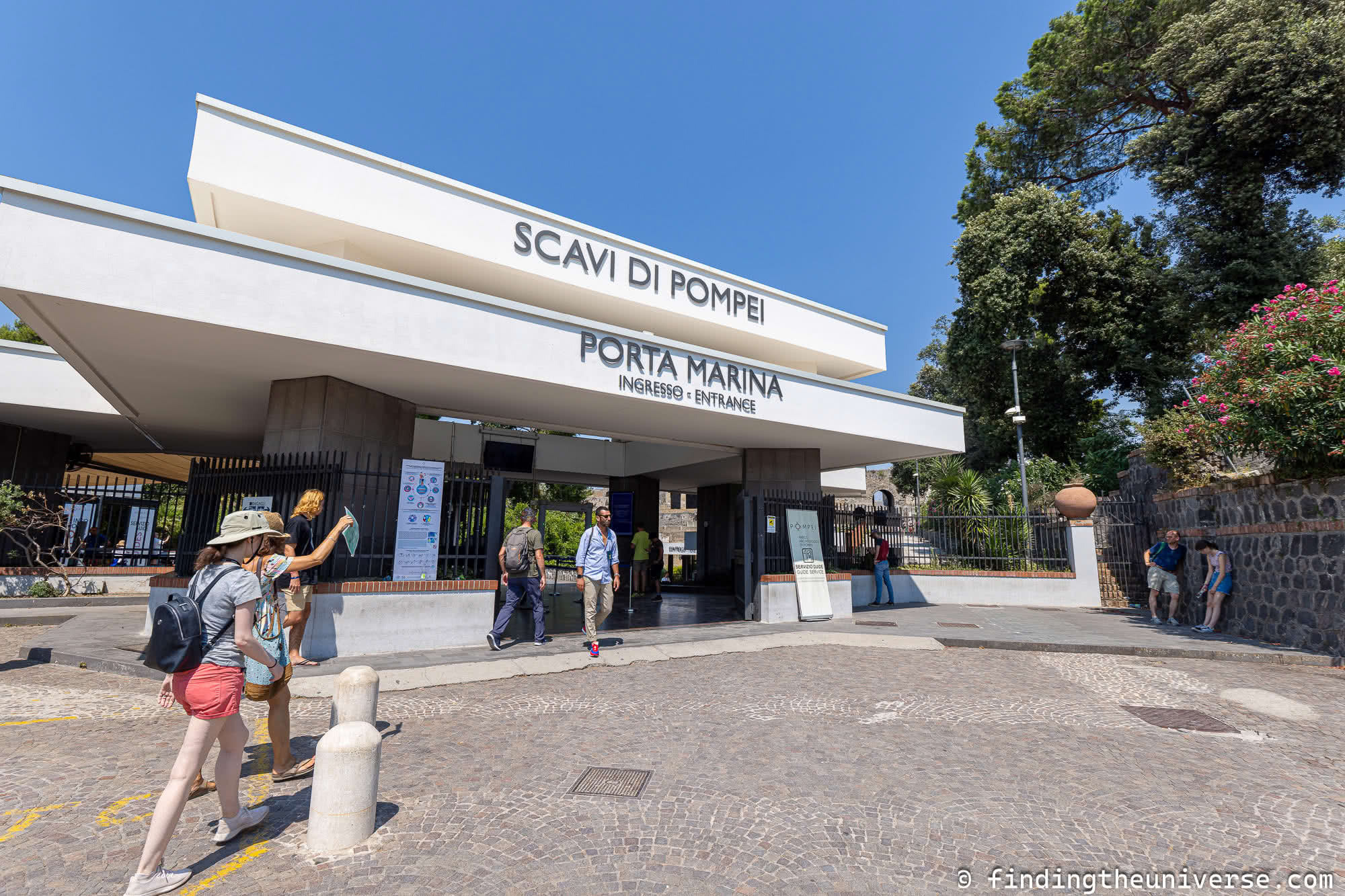
Online
You can buy Pompeii tickets online from a number of websites, as follows:
- On the official website here
- On GetYourGuide here
- On Viator here
In our experience, the official website tends to have the lowest cost online tickets, but they do not come with free cancellation.
Tickets sold by third parties do normally cost a bit more, but can have benefits such as free cancellation as well as the option to book a guided tour.
We recommend comparing prices and options to see which suits you. It’s also important to carefully read the redemption instructions when buying a ticket online so you know what you need to do in advance of your visit.
Often you can just show a ticket on your smartphone, but sometimes you might need to print something out or collect a ticket from a specific pick-up point.
By Phone
You can buy tickets for Pompeii by phone. The number is +39 811 865 8177. The office is normally open weekdays from 9.30 to 6pm. There’s a surcharge of €1.50 for booking by phone.
Can you Skip the Lines at Pompeii?
There are two lines at Pompeii. First, there is the line for the ticket office where you can buy tickets in person. Next, there is an entrance line for going into the site, which includes a security check.
If you pre-book your ticket, in most cases you can skip the ticket line. However, this will depend on the ticket you purchase, as some online tickets require you to swap a voucher for an actual ticket, so do check if this is the case with the ticket you have purchased.
The security / ticket-check line cannot be skipped by any visitors, but in our experience it moves pretty quickly.
When is Pompeii Free in 2024?
Pompeii is free to visit on the first Sunday of every month. On these days you will still need a ticket, but there is no cost for purchasing it.
Tickets for the free days can be purchased online at the official Ticketone site here, or in person at the ticket office on site.
We’d suggest doing the online ticket option as the site can get very busy on the free days, and if it exceeds capacity, the ticket offices close.
Note that some third-party sites will still charge you for the free ticket days, so only buy tickets for the free days on the official site!
What is the Pompeii Official Website?
There are multiple sites offering information on visiting Pompeii, including this one.
However, for the latest information on visiting Pompeii including ticket prices, updates, opening hours and more, we always recommend consulting the official website.
You can find it at the following web address, with content available in multiple languages including English. The site is excellent and has a wealth of information to help you plan your visit, and is well worth checking out.
Pompeii Layout and Maps
Pompeii is a large attraction, covering around 65 hectares (170 acres). From the east side to the west side is around a kilometer (0.67 miles), and it’s 0.8km (0.5 miles) from north to south.
Suffice to say, it’s not hard to get lost in Pompeii. Whilst much of the site is laid out in a grid, there are also plenty of narrow lanes and twists and turns. Navigation isn’t helped by fairly limited signage.
To help you find your way around, it’s a good idea to have an idea of the layout of Pompeii.
The first thing to know is that Pompeii is divided into nine distinct regions, or “Regio“. This system was developed way back in the 19th century when the site started to be excavated and remains in use to this day.
Each regio is assigned a Roman number, from I (one) to IX (nine). The regio is in a grid pattern, 3 wide and 3 high.
The layout of the regions isn’t entirely intuitive. It’s a counterclockwise spiral starting from the lower middle grid square. You can think of it like a tic-tac-toe board, or a table that looks as follows.
| VI | V | IV |
| VII | IX | III |
| VIII | I | II |
Having an idea of this grid and the numbering system will help you orient yourself when you are on site, as the Regio number you are in is regularly printed on walls and in signs.
Each Regio is also divided into “Insulae” or “Insula”. In Roman times, an Insulae was a city block, or an apartment building. For Pompeii, the Insulae are the blocks.
So, when you see a sign in Pompeii, it will usually tell you which Regio and Insulae you are in, for example REG VII INS XIII would mean you are in Regio 7, Insula 13.
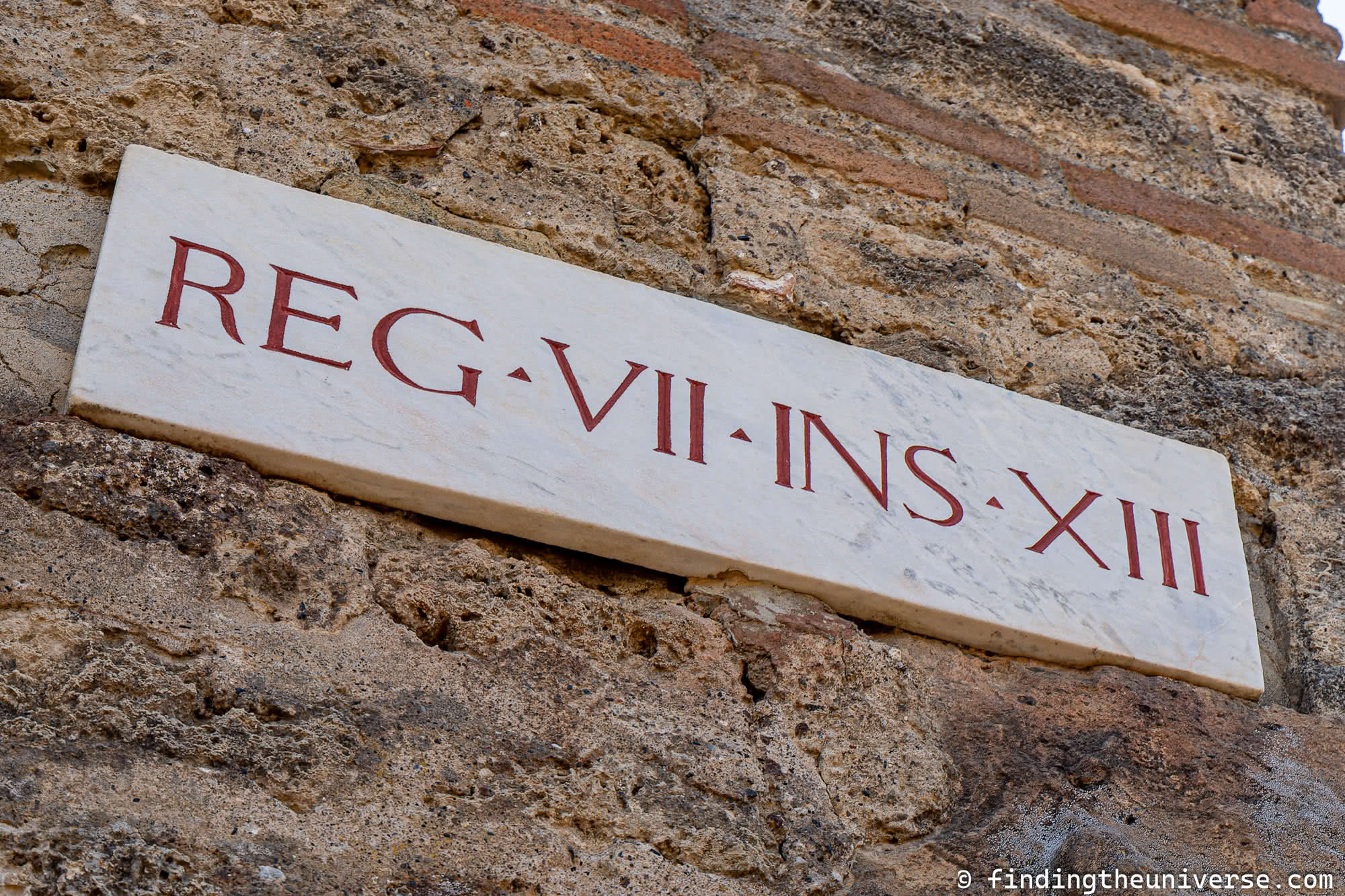
The Insula follow a layout system which I’m sure makes sense to an archeologist but seems designed to confuse the average person in my opinion.
However, it doesn’t really matter, because the official map has both the Regio and Insula numbers marked. So, if you have the map, all you need to do is find a sign to know where you are.
You can download a map and guide to the site from the official website here.
We highly recommend doing this in advance and saving it to your smartphone for reference. You should be able to get a printed version of this guide when you visit, but it’s good to be prepared just in case they aren’t available.
There are also street names to help you orient yourself. The main houses and attractions also have names.
I’d also add that each house (and some of the rooms in the houses) also have numbers. However, this is really more for cataloging and archaeological purposes rather than something visitors would want to use for navigating!
It is also worth noting that whilst most visitors visit the main Pompeii site, there are a number of other sites which have been excavated, and which can also be visited. These require you to have a different ticket, and to take a shuttle bus from the main site.
In summary, if you are visiting Pompeii without a guide, we recommend having a map on hand, and being aware of the Regio and Insulae system. You can also orient yourself with nearby obvious landmarks, with Mount Vesuvius often visible for example.
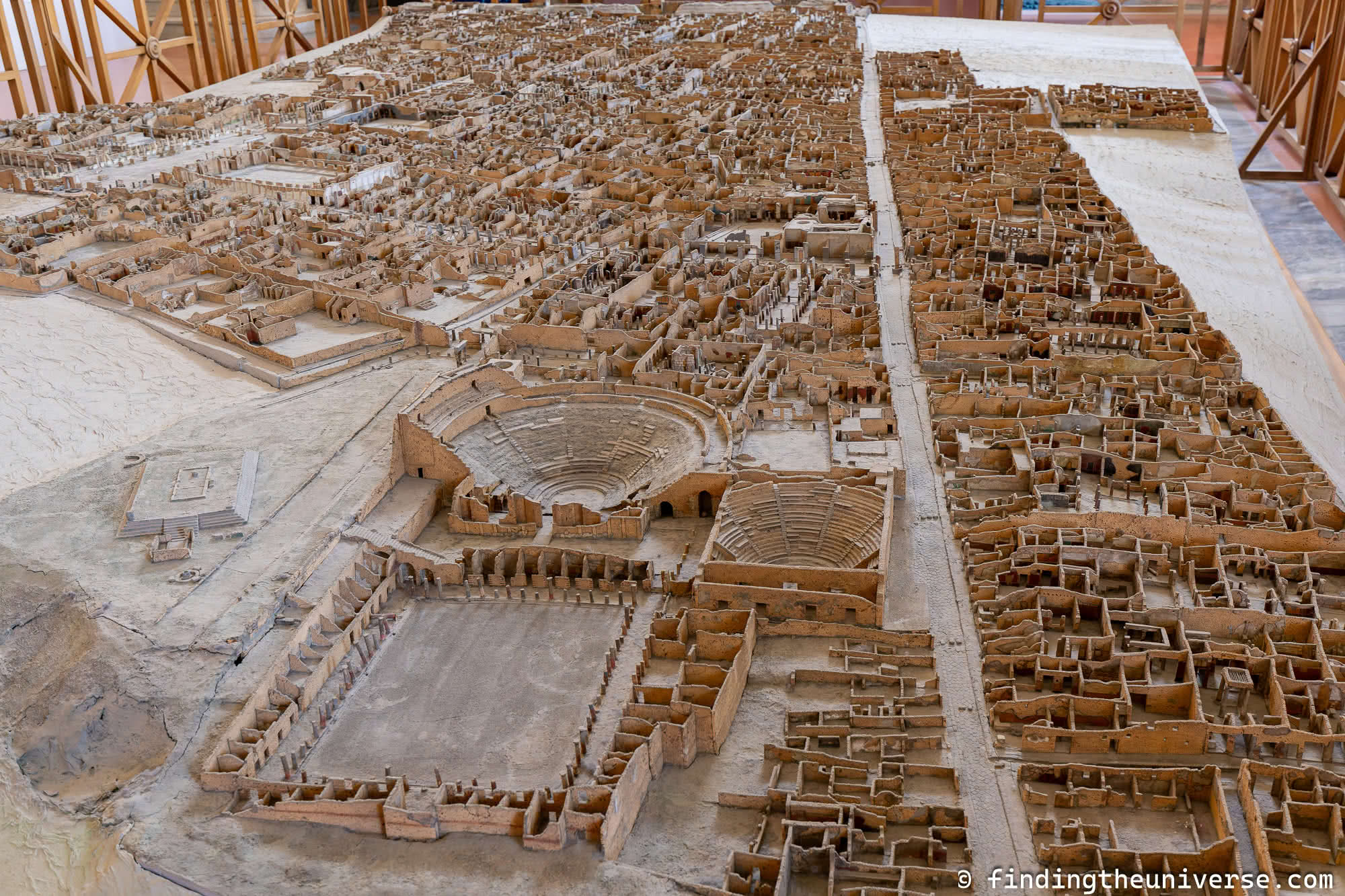
What to see and do at Pompeii
There’s a lot to see and do in Pompeii, and it can be a fairly overwhelming place to visit. This is why we would recommend taking a guided tour, or at the very least getting an audio guide.
To help you figure out what to see, we’re going to share what we think are some of the unmissable sights at Pompeii. Most tours will include at least some of these, although tour routes can vary. If you are taking a tour, always check what they include to be sure it covers your interests.
Top Sights at Pompeii
Obviously, everyone will have slightly different interests, however we think this is a good overview of the main highlights at Pompeii. These are the sights that most tours are likely to visit as well, although of course it will vary, and not all tours will visit every sight we list.
These sights are ordered approximately as you would encounter them entering the city from the western side. There’s an excellent map here you can download for reference as well.
- Porta Marina – arguably the most impressive of the original seven gateways to the city, and the one which led to the sea, hence the name. The barrel-vaulted ceiling is made from concrete and dates from 80BC.
- Plaster Casts of Pompeii’s victims – One of the most well-known sights at Pompeii are the plaster casts of those who lost their lives in the eruption, including people and dogs. The victims were encased in ash and asphyxiated, and their bodies entombed. Over time the bodies decomposed, leaving gaps in the hardened ash layer. During the excavations, plaster was carefully injected into these cavities to form the molds you can see today. These can be seen at various locations in Pompeii, including at the Antiquarium and the Forum Granary
- Antiquarium di Pompei (Pompeii archaeological museum) – found by the Porta Marina, this museum houses a collection of artifacts from the site. It must be said that the best artefacts from Pompeii can be found in the Naples Archaeological Museum, however there is a lot to see here nonetheless, including plaster casts of Pompeii’s victims.
- The Forum (Foro) – the heart of any Roman city or town is the Forum, where you would have found city administration buildings, the main temples and the market. If something important was going to happen in Pompeii, this was probably where it was going to happen.
- Basilica – found in the south-western corner of the Forum, the Basilica dates from around 80BC. Despite the religious sounding name, it was actually more of a civic hall, used for business and as a court for handling legal matters. Religious Basilicas came later, basing their name and layout on the Roman buildings!
- Forum Granary – The Granary is located by the Forum and would originally have been the main produce market. Today it is the home of thousands of artifacts which have been excavated from the ruins, as well as plaster casts of some of the victims of the disaster.
- Baths of the Forum (Terme del Foro) – No Roman town is complete without a bath house (the more the better), and Pompeii had at least five of them. The Baths of the Forum are the closest to the Forum. Here you can see the male and female bathing houses including the hot bath room, warm bath room and cold plunge room.
- Via Abbondanza (main street) – the main street (Decumanus Maximus in Roman times) of Pompeii runs west to east from the Forum all the way across the town to Sarno Gate. This would have been a busy, pedestrianized street filled with shops and food and drink vendors. The stretch which leads from the Forum has three upright stones, designed to block chariot passage as this was a pedestrian street.
- Eateries – along many of the streets, and especially the main streets, you will see evidence of ancient Roman eateries. Look for marble counter tops with holes cut out where the food would have been stored.
- Arches – Pompeii has a number of arches which you will see throughout the city. At the northern end of the Forum is an honorary arch, whilst further north at the intersection of Via Fortuna and Vicolo del Foro you will find the Arch of Caligula. Some of these arches also served a more practical function, hiding water tanks that supplied nearby fountains. Today many of these fountains have been modernized and provide clean drinking water for visitors.
- House of the Tragic Poet (Casa del Poeta Tragico) – One of the many houses you can visit in Pompeii, this one is just to the north of the Forum by the Arch of Caligula. It’s notable for the beautiful mosaic floors which depict scenes from Greek mythology, which is where the houses name comes from.
- House of the Faun (Casa del Fauno) – just to the northeast of the House of the Tragic Poet, on Vicolo del Fauno, this is one of the largest and most well-known of the houses in Pompeii, and is a must-visit. It occupies a whole block, taking up around 32,000 square feet, and would have been owned by a very wealthy family. The name comes from a bronze statue of a faun which was found here, the original of which is in the Naples Archaeological Museum (a copy is viewable in the house).
- House of the Vetti (Casa dei Vetti)– found to the northeast of the House of the Faun, the House of the Vetti is a beautifully decorated property featuring many beautiful fresco paintings which depict various mythological scenes. It’s also a very large property.
- Brothel (Lupanare) – almost as popular today as it likely was in its heyday 2,000 years ago (although with a somewhat different clientele), the brothel was where citizens came to find sex workers, as well as drinks and social interaction. The name Lupanare comes from the Latin name for a wolf-den, as prostitutes were known as she-wolves. The brothel has fairly graphic frescoes and graffiti, and parents might want to skip this attraction.
- Stabian Baths (Terme Stabiane) – As previously mentioned, Pompeii had at least five bath houses, of which the Stabian Baths are the largest and oldest. In fact, they are one of the oldest Roman baths in the world. They are found on the intersection Via dell’Abbondanza and Via Stabiana. Here you can see the different mens and women’s bathing areas. We’d probably recommend picking one bath house to visit, unless you are particularly into Roman bath houses.
Other sites which are a little off the main route and which are not always included on regular tours (although, again, this varies!):
- Temple of Isis (Tempio di Iside) – this small and largely intact temple is found next to the Grand Theatre, and is dedicated to the Egyptian goddess Isis. The Cult of Isis was popular in Pompeii, despite proclamations against it by the Roman Senate. It is believed that the composer Mozart visited this temple when he was 13, and it inspired his composition The Magic Flute
- Grand Theater (Teatro Grande) – Entertainment was a key part of Roman life, and there were a number of venues across the city where performances would have taken place. The Grand Theater was built in the Greek style, which meant taking advantage of a natural hill slope to create the auditorium, which would have had seating for 5,000 spectators. Much of the Theatre survives today, and it is well worth a visit. It’s in the south part of Pompeii, near Porta di Stabia.
- Small Theater (Teatro Piccolo – Odeion) – Right next to the Grand Theater is the Small Theater, a more intimate performance venue which was also used for council meetings. It also had a roof, primarily to improve acoustics. At the time, it was often used for mime performances, which were popular. It was also used for music.
- Viewpoint / Panoramic View of Pompeii – To grasp the scale of Pompeii, you should consider visiting the viewpoint by Casina dell’Aquila, just by the intersection of Via Dell’Abbondanza and Vicolo di Tesmo. The viewpoint is at the original level of the ground here before the excavation, and will give you an idea of just how much ground had to be moved in order to unearth the city.
- House of Menander (Casa del Menandro) – owned by a high ranking and wealthy family, this large house (19,000 square feet) is named for the fresco which depicts the Greek playwright Menander. There are a number of rooms that can be visited.
- Garden of the Fugitives (Orto dei Fuggiaschi) – found in the southeast part of Pompeii, the Garden of the Fugitives contains the plaster casts of 13 of the victims who died trying to escape the city.
- Amphitheater – an important entertainment center in a Roman city or town was the amphitheater, essentially an enclosed theatre which was used for gladiatorial battles, circuses and more. The most famous Amphitheatre is Rome’s Colosseum, but the one in Pompeii is actually one of the oldest surviving amphitheaters from the Roman Empire. Much of the structure still survives, with seating for around 20,000 people.
- Aqueduct – The Romans were incredible engineers, and whilst they didn’t invent the aqueduct, their aqueducts were definitely engineering wonders of their time. They allowed the distribution of water across the Roman Empire, and allowed towns like Pompeii to get fresh water to their citizens. The water in Pompeii was carried by the Augustan Aqueduct, sourcing water from 96km away, using only gravity to move the water! Today, you can see where the aqueduct system arrived into the city at Castellum Aqueduct, next to Porto Vesuvio in the northern part of the city. From here it was distributed to water towers and fountains across the city.
As you can see, there’s plenty to see and take in at Pompeii!
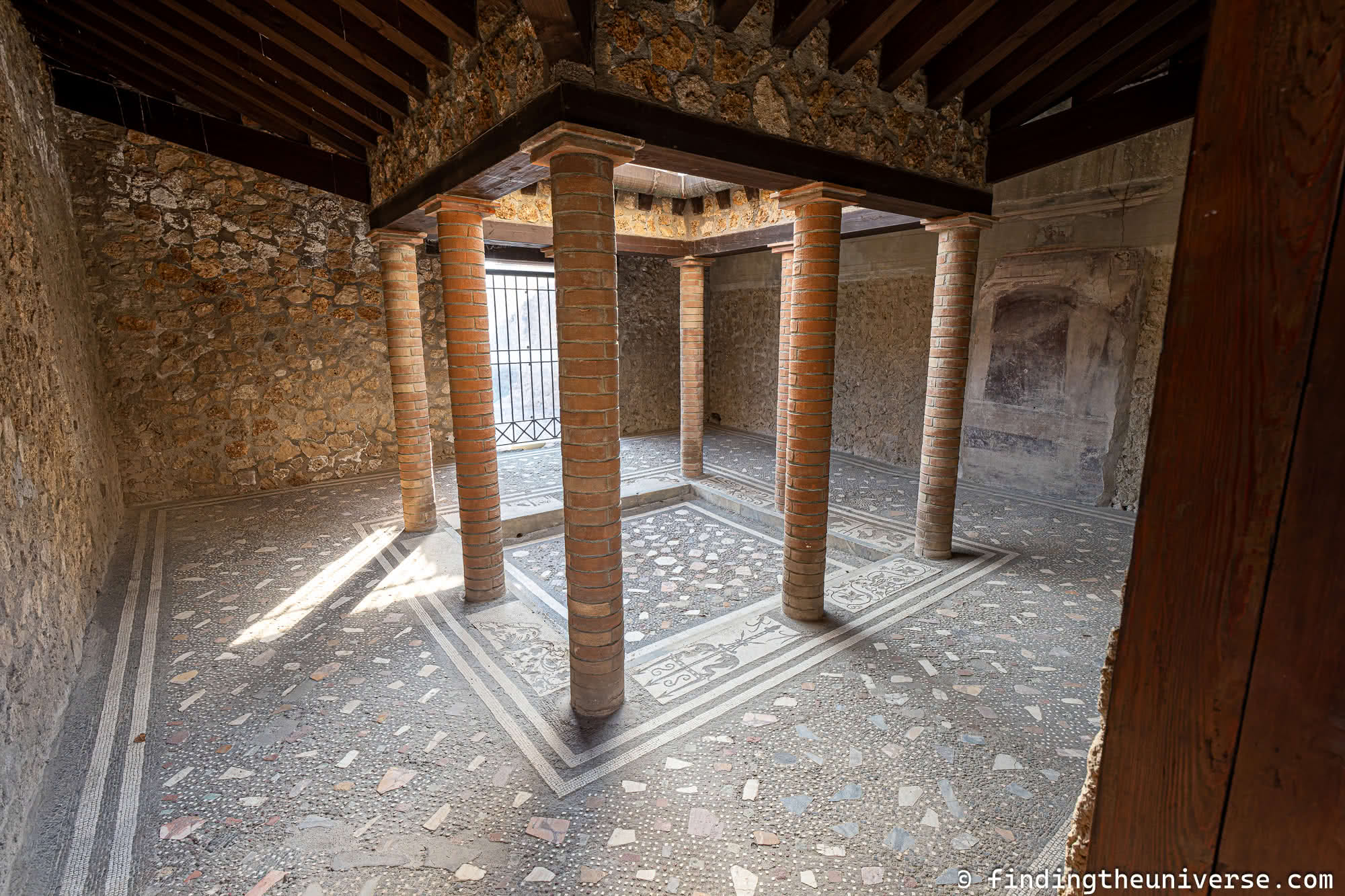
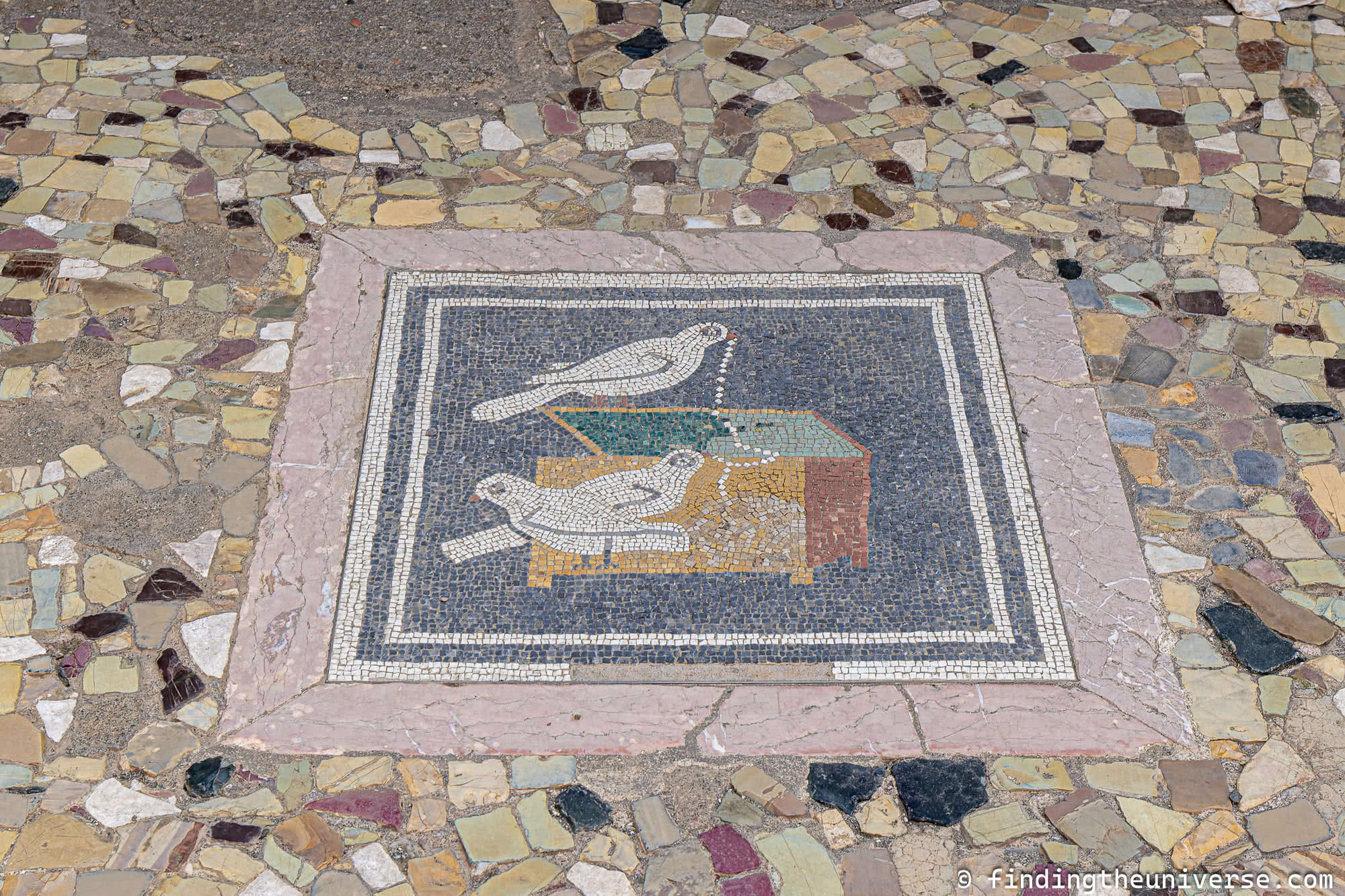
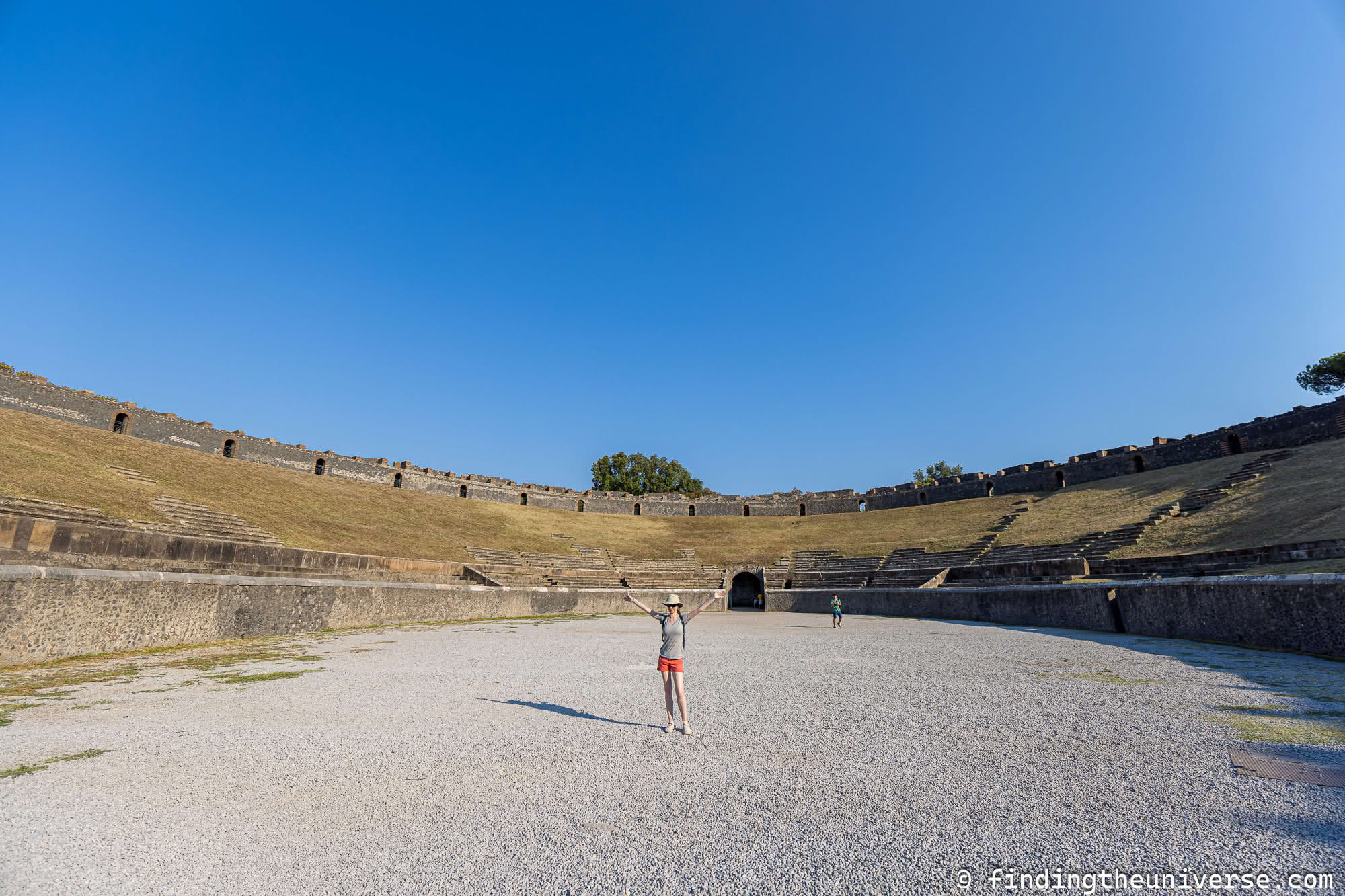
Tours of Pompeii
One of the best ways to visit Pompeii is to take a guided tour. There’s a lot to see and a lot of history and information to absorb, and having a good guide can definitely improve your experience.
You have a few options for taking a tour. You can book a tour which includes transport from a major city such as Rome or Naples. Or, you can make your own way to Pompeii and just take a tour on site.
We’ll include a number of options for you to consider, depending on your preferences.
- This complete Pompeii Experience tour with Take Walks is a tour we have personally done and can highly recommend. It’s a three-hour small group tour of the site which covers the major sites as well as some less visited spots.
- This day trip from Rome to Pompeii is also with Take Walks. It includes round-trip transport from Rome, a drive along the Amalfi coast and time in Positano or another Amalfi coast town
- Another day trip from Rome to Pompeii with Take Walks, this one includes a vineyard visit with lunch and wine tasting
- This tour with City Wonders from Rome has you visiting Pompeii and also hiking up Mount Vesuvius. Lunch is also included.
- This tour from Rome has you visiting Pompeii as well as Sorrento on the Amalfi coast
- This full day private tour from Rome includes round trip transport to Pompeii and time in Positano. Note that entrance tickets to Pompeii are not included. This is a similar private tour which includes entrance tickets, lunch and a winery visit.
- This full day tour has you visiting Pompeii from Naples on a 2-hour guided tour. It also includes lunch, and time exploring Mount Vesuvius. This is a similar tour.
- This full day tour from Naples visits both Pompeii and Herculaneum, allowing you to see two different locations affected by the eruption
- This full day tour from Naples includes a tour of the Amalfi coast, lunch, and a tour of Pompeii
- This half day guided tour from Naples includes a 2.5 hour guided tour of Pompeii
You can also book a tour guide on arrival at Pompeii. Tour guides are available just inside the site entrance and should have an official badge.
Note however that whilst accredited, the guides are freelance and prices are not fixed. You will need to negotiate price, route and tour duration with the available on-site guides.
Generally, these guides will have a price they charge for a tour, irrespective of group size. By having a larger group you’ll pay less per person, but obviously have a less personalized experience.
You can see more on this process here.
Depending on how busy the day is, guides may not be available. So, we would generally recommend booking a guided tour in advance instead.
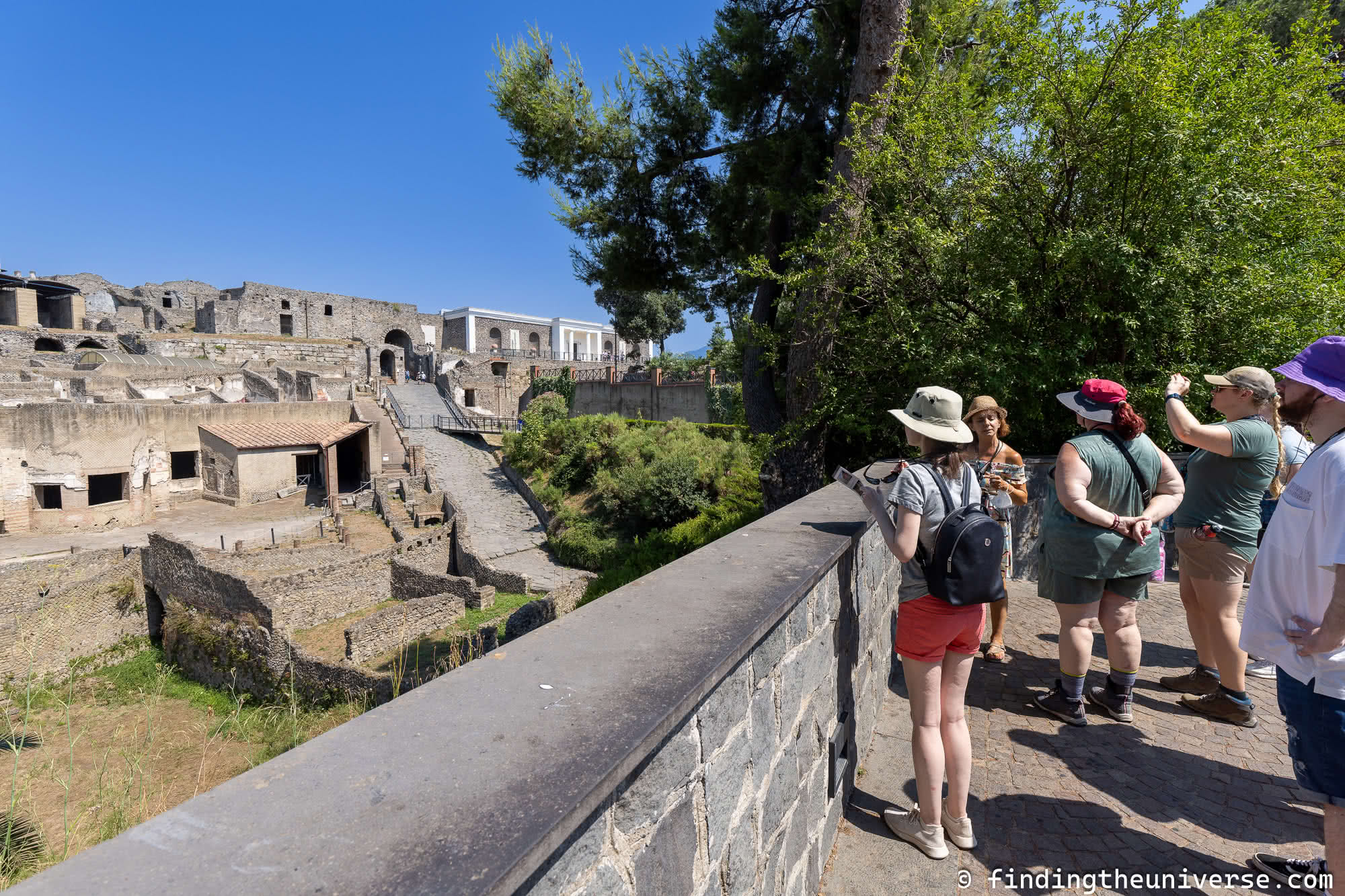
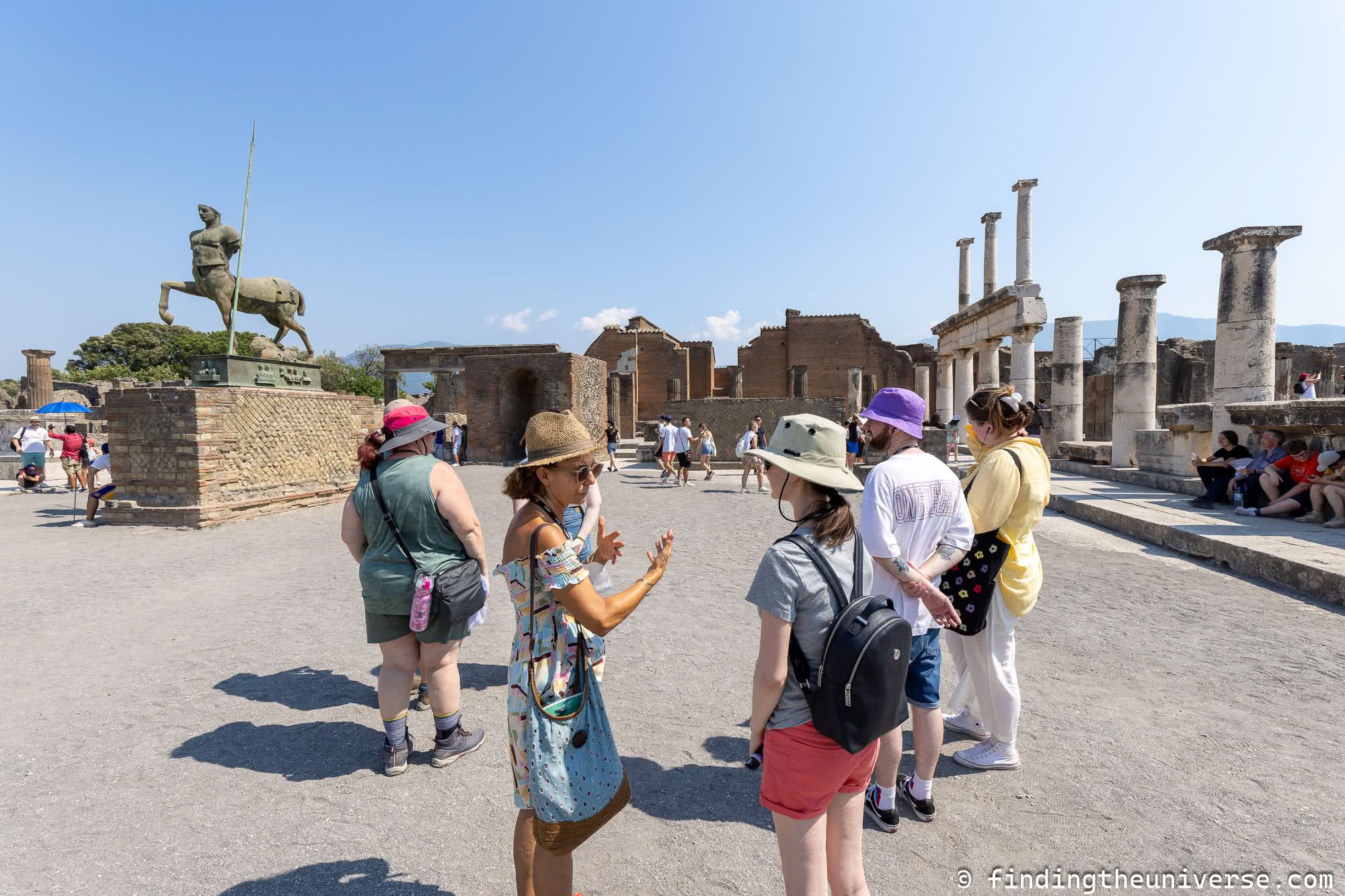
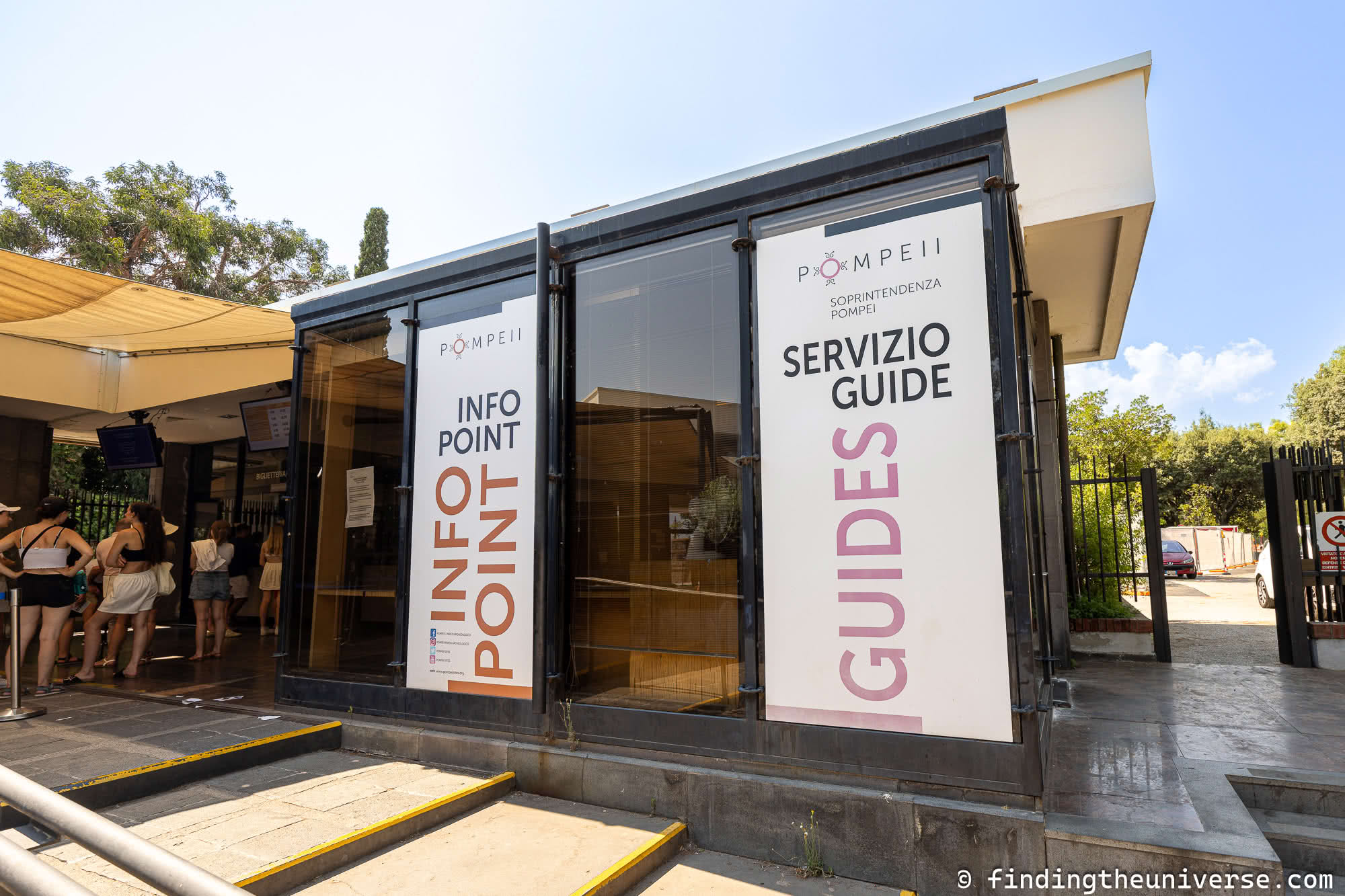
Practicalities for Visiting Pompeii
Dress Code at Pompeii
Pompeii is not a religious site and as such there is no specific dress code for visiting.
There are a couple of rules around clothing. First, you cannot be bare chested, you must be wearing a top. In addition, clothing that could be considered disruptive is also not allowed, and costumes, masks and banners are not permitted.
This clothing rule is normally used to prevent protestors using the site, so is unlikely to affect most visitors. Steer clear of any offensive clothing and you’ll be fine!
You will still want to think through your clothing choices prior to visiting. The majority of your visit will be spent outside, and there is minimal shade or shelter available.
See the section of what to wear and pack for Pompeii for some suggestions on what to bring for your visit.
Facilities at Pompeii
Pompeii has a number of visitor services you can use. These include:
- two on-site bookshops, one at Piazza Esedra and one inside the Antiquarium.
- audio guide hire, available at the Porta Marina entrance and Porta Anfiteatro entrance.
- first aid services, available near the Chora Cafe on Vicolo degli Augustali
- A cafe called Chora where you can get drinks and snacks like cakes, pastries and ice cream
- Multiple free water fountains across the site
- Multiple free toilet facilities across the site
- Baby changing facilities. There are three of these, one on Via dell’Abbondanza, one on Via di Nola, and one at the corner of Via Stabiana and Via della Fortuna

Smoking at Pompeii
Smoking is forbidden at Pompeii except at designated smoking areas. These can be found near the Casina dell’Aquila and the toilet facilities.
Security at Pompeii
All visitors must go through a security check at Pompeii. Bulky objects, umbrellas, and bags larger than 30x30x15 cm (12 x 12 x 6 inches) are not permitted on the site and must be left at the cloakroom. This is a free service.
Otherwise, the rules are pretty obvious, and mostly focus on protecting the site and ensuring a good experience for all. So you’re not allowed to play music, deface objects, climb on the ruins, pick fruits or flowers, build fires, enter fenced off areas and so on.
You can see the full list of rules and regulations here.
Accessibility at Pompeii
Pompeii is obviously an ancient city, and as such there are accessibility challenges. However, efforts have been made to ensure the site is as accessible as possible for all visitors.
There are a number of specially designed accessible routes, called Pompeii for All, which are designed to allow access for mobility impaired users, as well as parents with buggies, to a large part of the site.
These routes include many of the main buildings that visitors would want to see, and cover a total of 3.5km. You can see details of these routes on the Pompeii for All page.
There are also accessible toilets found on site.
Pompeii has also developed a program to help those hard to hearing to enjoy the site. More on this program, and accessibility on the site in general, can be found on the Pompeii for All page.
Luggage storage Near Pompeii
Visitors to Pompeii are not allowed to bring any bags larger than 30cm x 30cm x 15cm on site. So nothing larger than a small backpack essentially. We’d suggest leaving luggage in your hotel room where possible.
If you must travel with a bag which is larger than the allowed size, there is a cloakroom at Pompeii itself where you can store luggage and other items free of charge.
There are also luggage storage lockers on the lower floor of the Pompeii Scavi train station available for a fee.
Tips for Visiting Pompeii
Based on our experiences visiting Pompeii, we wanted to share some tips to help you get the most from your visit.
Plan your day in advance
The first thing we recommend doing is planning your day out before you visit. Decide what you want to see at Pompeii, and then decide if you want to take a tour.
If you decide to take a tour, check what it includes, and then consider if you need additional time. If you are taking a tour that includes round-trip transport, you might not have much extra time.
If you are taking a tour that starts on site, make sure you know where the meeting point is and the meeting time, and plan how you will get to and from Pompeii.
If you are doing a self-guided visit for any part of your time at Pompeii, we suggest looking at the official map and planning out what you want to see. You may even consider coming up with a general route to follow. This will help orient you when you are actually there.
Consider a Guided Tour or Audio Guide
We can highly recommend taking a guided tour of Pompeii. An expert guide is going to be able to bring the site to life and really help you understand what you are seeing.
On our most recent visit to Pompeii we took this guided tour with Take Walks and can highly recommend it. However, there are a number of options.
If you take a guided tour that meets on site, we highly recommend planning on staying at least an hour more on site once the tour ends so you can see any other sites that the tour didn’t cover.
If you opt not to take a guided tour, then we’d suggest either picking up an audio guide on site, or at the very least a guidebook that includes a self-guided Pompeii tour like the Rick Steves Italy guidebook.
Dress and Pack Accordingly
If you are visiting Pompeii in the hotter months of the year, you will want to bring a good sun hat to keep the sun off your face, loose fitting clothing, and likely a small daypack to carry suncream, water and any snacks.
If rain is a possibility, a light raincoat or poncho is also a good idea. Umbrellas are not allowed on site.
If you are visiting outside of the warmest months of the year, then some warmer layers are a good idea just in case it is cooler on site.
Footwear is also important. The ancient streets of Pompeii can be uneven, varying between loose dirt and cobblestones. A good pair of comfortable shoes that you are happy to spend time walking in is a must.
For shoe suggestions, see our guides to the best travel shoes for men and the best travel shoes for women for some ideas.
You will definitely want to bring a water bottle with you. Fresh drinking water is available at fountains across the site, and on a hot day you will need to drink plenty of water. We use and love our Klean Kanteen water bottles for travel, but there are lots of options out there of course.
We can also recommend bringing some sort of guidebook with you. We think the Rick Steves guidebook is one of the best options, either his Italy guide or Naples & the Amalfi Coast snapshot guide.
Both have a self-guided Pompeii tour which is an excellent option if you choose to skip a guided tour.
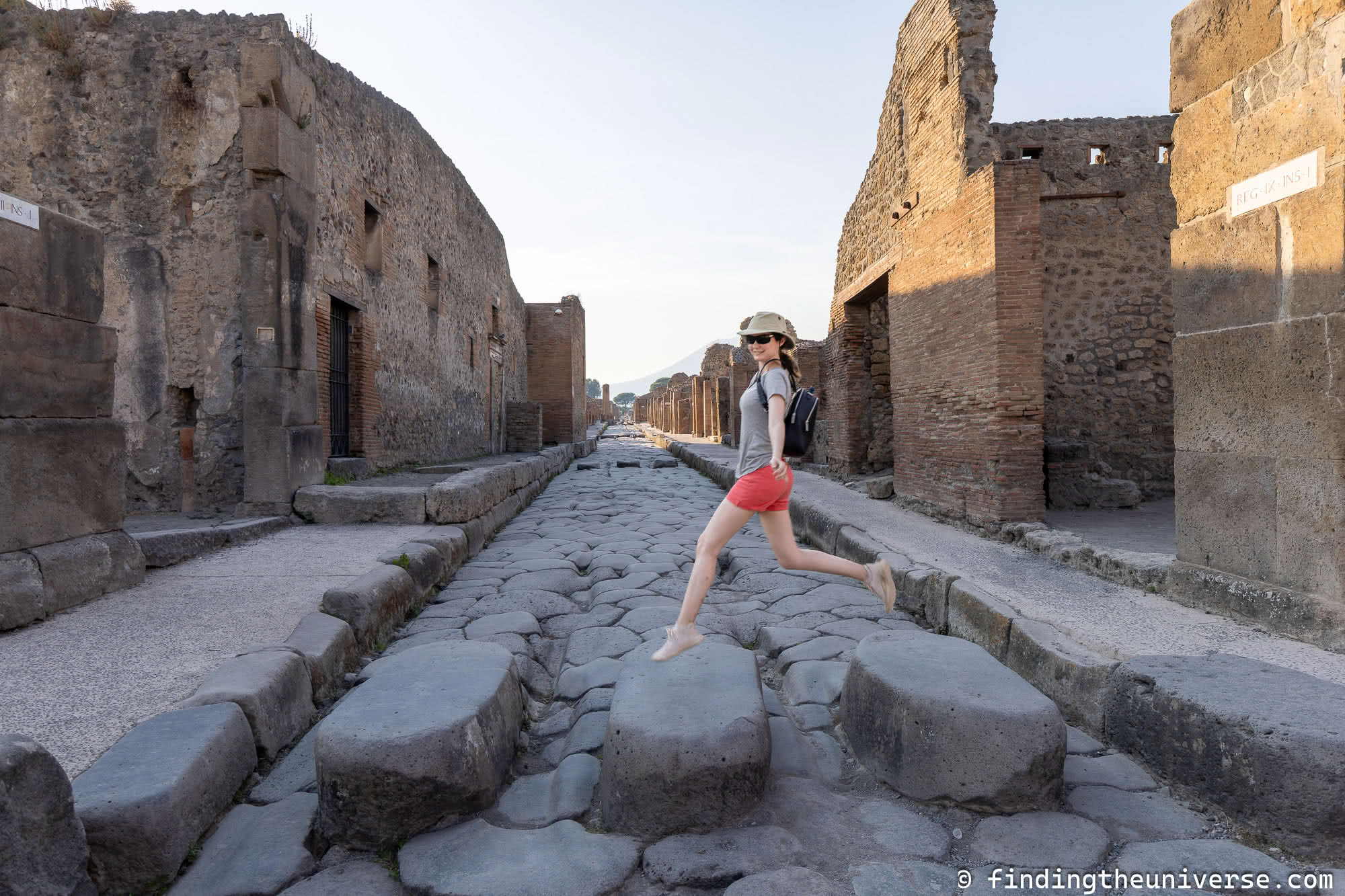
Be Wary of on-site Touts at Pompeii
Like any popular tourist destination, Pompeii has a couple of pitfalls to watch out for.
First, if you want to take a tour and haven’t pre-booked one, then we’d recommend taking one of the tours with an approved tour guide.
These can be found at Piazza Esedra and Porta Marina, once you have entered Pompeii, after the security checks. These tour guides have official badges issued by the Tourist Board of the Campania Region. If you are unsure if a guide is accredited, check with the ticket office.
Be aware that these guides will most likely need to be paid in cash, and the price of the tour is going to be something you’ll need to discuss with the guide in advance.
When you arrive at Pompeii you will also likely be offered tours by guides outside the gates. These will not be led by Pompeii’s accredited guides, so the quality of the tour is not guaranteed. We’d suggest ignoring these options and heading inside to find a guide if that is of interest.
One other thing to note is that as Pompeii is a popular tourist destination that can be crowded, there is a risk, as with any destination like this, of pickpockets. So just be mindful of your belongings and keep valuables in sight, or safely away in zippered pockets. This is also the case on the train and at the train station if you choose to take public transportation.
We’ve never had an issue in Italy, but it’s always a good idea to take basic safety precautions when traveling anywhere, as you would at home.
Arrive Early and Head to the Back
Pompeii is a popular destination, and as such it can get quite busy. In addition, there is limited shade on site, and in the summer months particularly it can get very hot on site.
All this means that for the best experience we recommend arriving early in the day if you can. If you are planning on taking a tour, book it for earlier in the day. If you are planning to guide yourself, plan out your route so you head away from the entrance first, and work your way back towards it.
Many visitors only visit the major sights, many of which are located not too far from the entrance areas, particularly Porta Marina. Tours groups also follow similar routes. So if you want a less crowded experience, identify a few sights that you are interested in that are off the beaten path, and head to those first.
Bring a Water Bottle
We mentioned this already in the “what to pack for Pompeii” section of this guide, but we think it is worth repeating. Pompeii gets incredibly hot in the summer months and there is not much shade.
There are lots of free drinking water fountains across the site, so bring a water bottle and stay hydrated for free as you wander!
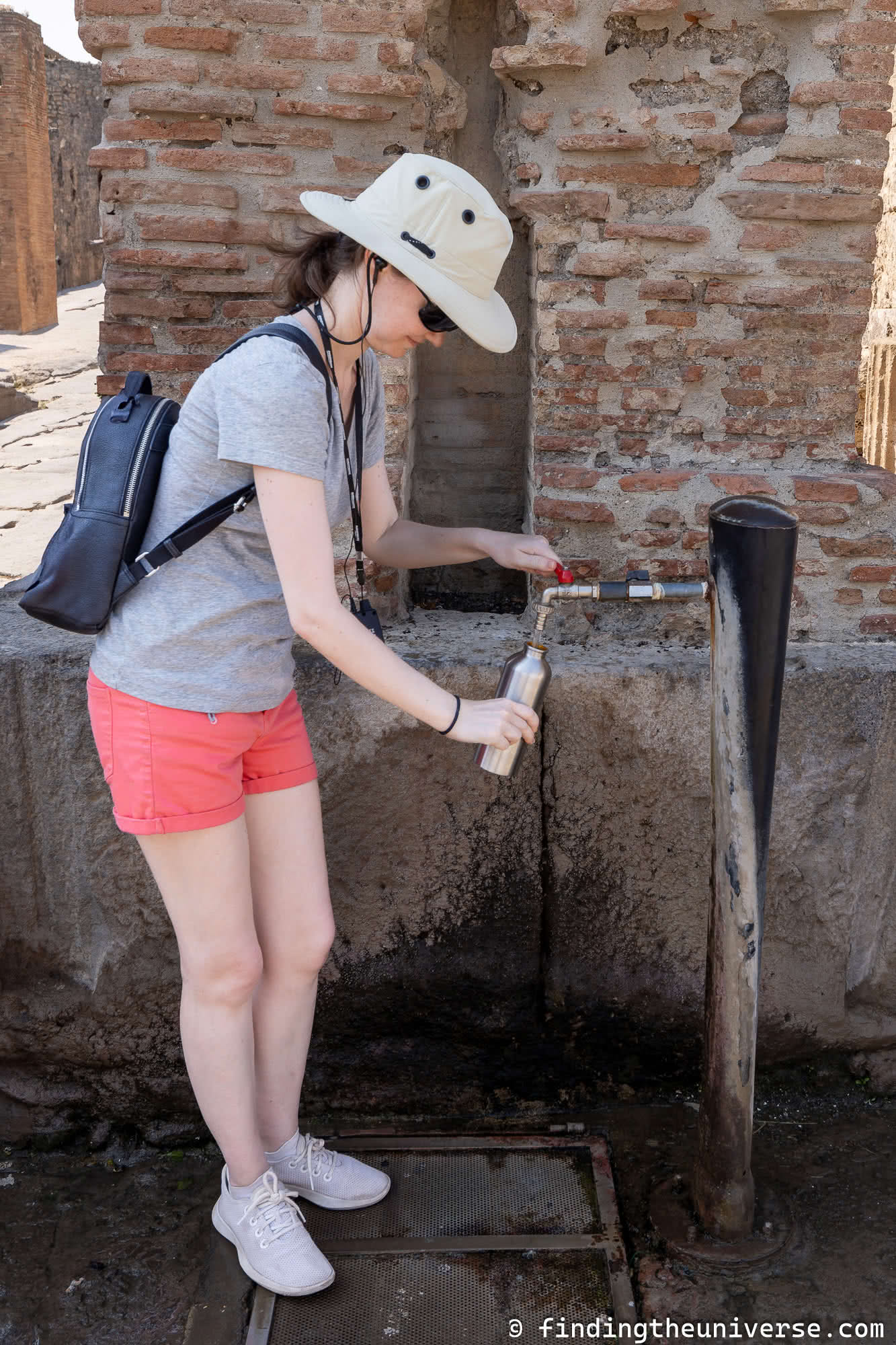
Escape the Crowds at Pompeii
Pompeii is a hugely popular attraction, and as a result it can be busy. The site has a limit of 15,000 visitors at any one time, but despite the site being quite large people tend to head to a handful of locations such as the Forum, Brothel, and Bath houses, meaning it can feel more crowded than it is.
Here are some tips for escaping the crowds at Pompeii.
- Visit at a quieter time of the week or year. Peak season in Italy is generally from May through August, with weekends being busier than weekdays. If you can’t avoid visiting in high season, try visiting on a week day if possible.
- Head to a quieter part of the site if you can, away from the groups. Most tours follow a similar route to a handful of highlights, and if you head to the less popular areas you can find yourself wandering almost deserted streets, even at a busy time of year
- Use a quieter gate. Many people enter through the Porta Marina as it’s next to the train station. The Anfiteatro gate tends to be quieter, and brings you in right next to the Amphitheater as well, from where you can explore the site at your leisure
Attractions Near Pompeii
Pompeii is one of the most popular attractions in the Naples area, but it is by no means the only attraction in the area! Here are some other attractions in the general area to consider adding to your itinerary.
- Herculaneum – the other well-excavated town that was buried by the Vesuvius eruption is Herculaneum. This is closer to Naples, and also easily accessible by the Circumvesuviana train service. It’s a smaller site but as it was a wealthy seaside resort, it has a high density of luxurious dwellings. It is usually quieter than Pompeii, and some tours like this one visit both.
- Mount Vesuvius – the volcano which caused all the trouble is still active and still posing a threat to the millions of people who live in the area. It’s a dominant part of the skyline, and you can head all the way up to the summit to peer into the steaming crater and hike around the rim. There’s a small fee to visit the park, and it can be reached by public transport or on a guided tour like this.
- Amalfi Coast – one of the most popular and spectacular regions of Italy, the 50km long Amalfi Coast is right next to Pompeii. Gorgeous seaside towns like Positano and Sorrento cling to the dramatic coastline. It’s well worth spending a few days here if you can. Alternatively, you can get a taste of what’s on offer by taking a tour which includes the Amalfi Coast like this.
- Naples – the capital city of the region, Naples tends to divide visitor opinion. It can be crowded, and chaotic yes, but it’s also home to amazing food and numerous attractions. Pompeii visitors should definitely take the time to visit the Naples National Archaeological Museum, which has the majority of the best preserved artefacts from Pompeii available for viewing.
- Capri – a popular island for a day trip (although stay overnight if you can to avoid the crowds!), Capri can be visited by ferry from both Naples and Sorrento. It’s a beautiful island with a lot to see, but it can get incredibly crowded in the summer months.
Of course, there is much more to see in this area, but this should give you an idea of what is on offer in the area around Pompeii!
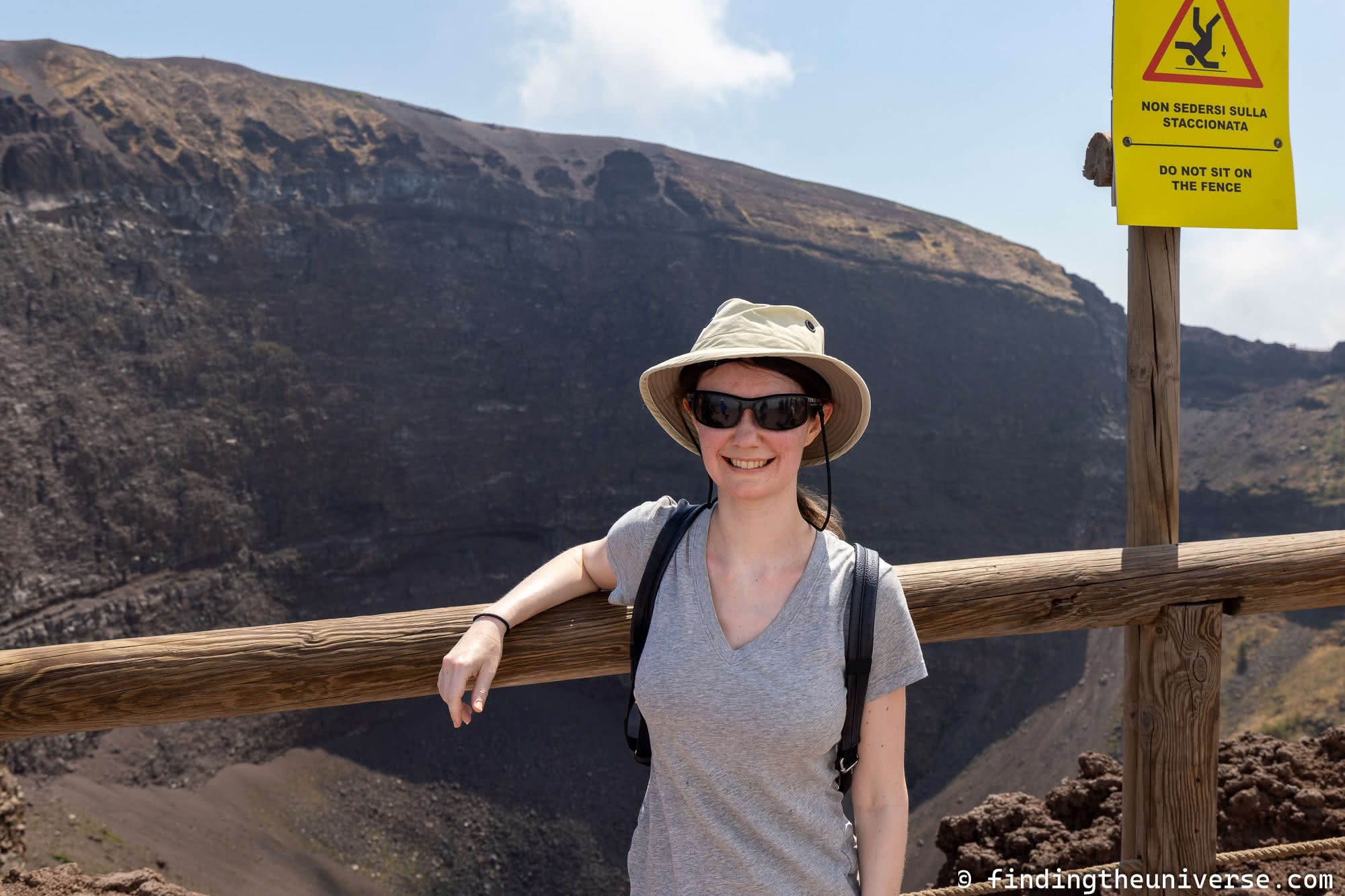
Where to Stay Near Pompeii
If you’re looking for somewhere to stay near Pompeii, you have quite a few options. You can stay close to the site, or you could stay in nearby Sorrento or Naples.
It’s also possible to visit Pompeii as a day trip from Rome, but we’ll focus on closer accommodation for this part of the guide. See our guide to spending 3 days in Rome for Rome accommodation options.
- Pompeii Ruins De Charme B&B – Literally across the road from the Piazza Anfiteatro entrance this popular B&B offers air-conditioned rooms with breakfast included. Rooms also have a kitchen and dishwasher if you prefer to cook for yourself. Parking is available for a fee.
- Hotel Forum – also just next to the Piazza Anfiteatro entrance, this is a well-reviewed 4* hotel offering free private parking, air-conditioned en-suite rooms and a restaurant. Breakfast is available.
- Habita79 Pompeii – just a few minutes walk from the Anfiteatro entrance, this 4* hotel offers en-suite air conditioned rooms as well as an on-site spa and wellness studio. Breakfast is available. Note there’s no on-site parking.
- Agora Hostel – five minutes walk from the Anfiteatro entrance to Pompeii, this well rated hostel offers great value private and shared rooms with air conditioning. There’s a bar and coffee house on site but no dining or parking available.
- La Ferrovia Guesthouse Sorrento – found just next to Sorrento train station, this guesthouse offers private en-suite air-conditioned rooms with coffee makers. Paid parking is available nearby but there’s no on-site restaurant
- Grand Hotel Excelsior Vittoria Sorrento – if you’re looking for a 5* luxury experience in Sorrento, this is the hotel to head for. Expect spectacular coastal views, a beautiful garden, lovely rooms, and two restaurants to choose from.
Of course, there are a great many more options to choose from! We recommend looking on booking.com for everything from hotels to guesthouses, B&Bs, hostels and apartments.
We use them for our booking accommodation for travel all over the world and love how easy it makes it to filter and find the right property for our budget and requirements.
See all their listings for the Pompeii area here.
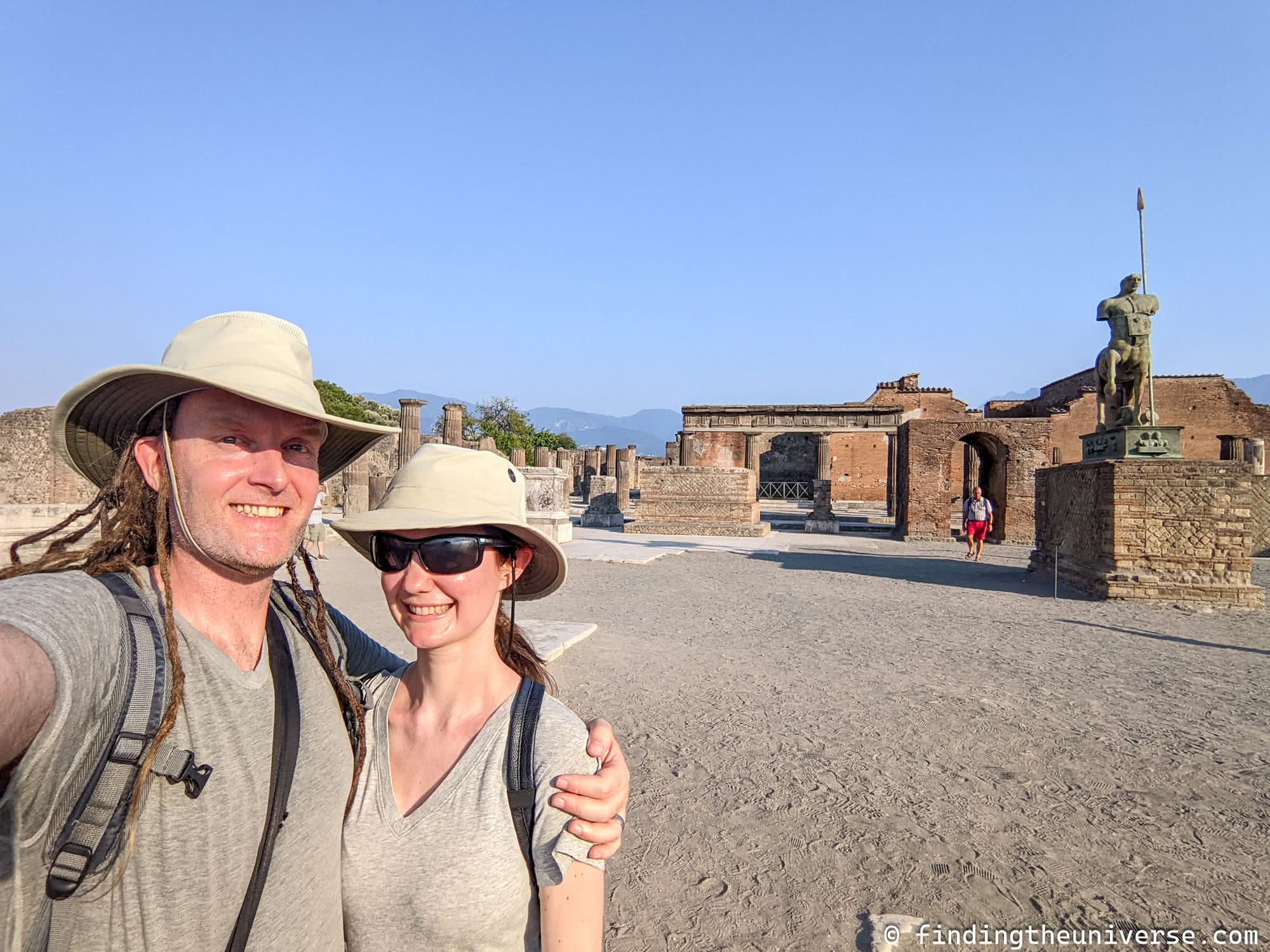
Further Reading for Visiting Italy
Well, that finished up our guide to visiting Pompeii! It’s just a small part of our content on Italy and Europe, which we hope you will find useful when planning your trip.
Here are some of those guides, as well as links to third party resources we recommend.
- We have a guide to spending 1 day in Rome, as well as guides for 2 days in Rome and 3 days in Rome, which should help you plan your time in Rome. We also have a guide to the best food tours in Rome, the best gelato in Rome and the best cafes to drink coffee in Rome
- We have a guide to visiting the Colosseum, as well as a guide to visiting the Vatican. These have everything you need to know to plan your visits to this remarkable attractions
- Beyond Rome, we have a guide to Florence, suggested things to do in Milan, a guide to spending 2 days in Milan, and tips for a day in Venice
- We also have a detailed 10 day Italy itinerary to help you plan a trip in this wonderful country. We also have a suggested 2-week Europe itinerary which naturally includes Italy!
- If you’re looking for a physical (or Kindle!) guidebook, we recommend the latest edition of Rick Steves Italy guide, which has lots of practical information to help you make the most of your stay
And that’s it! As always, we hope you found this guide useful, and if you have any questions or comments about visiting Pompeii, just pop them in the comments below and we’ll answer as soon as we can.
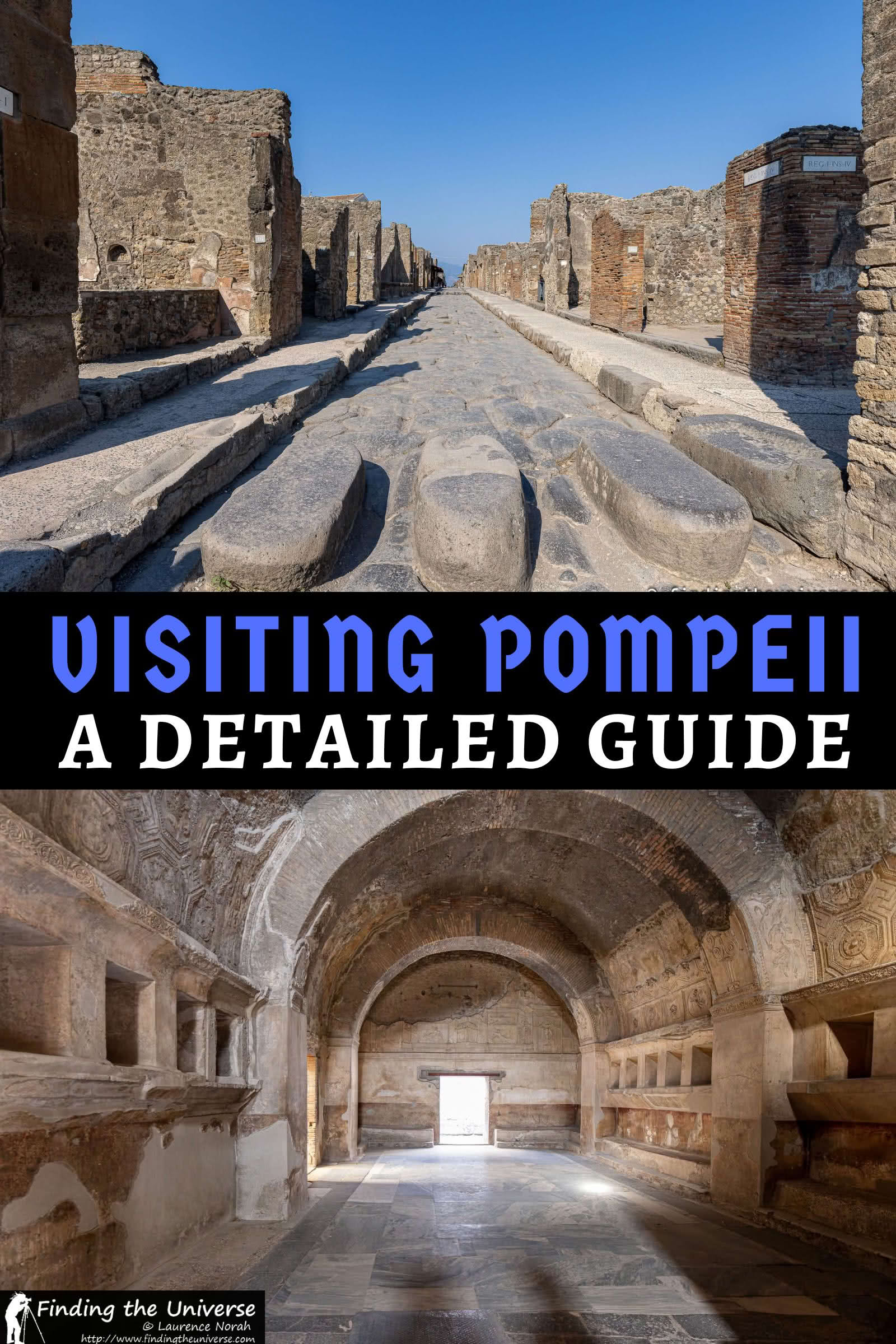

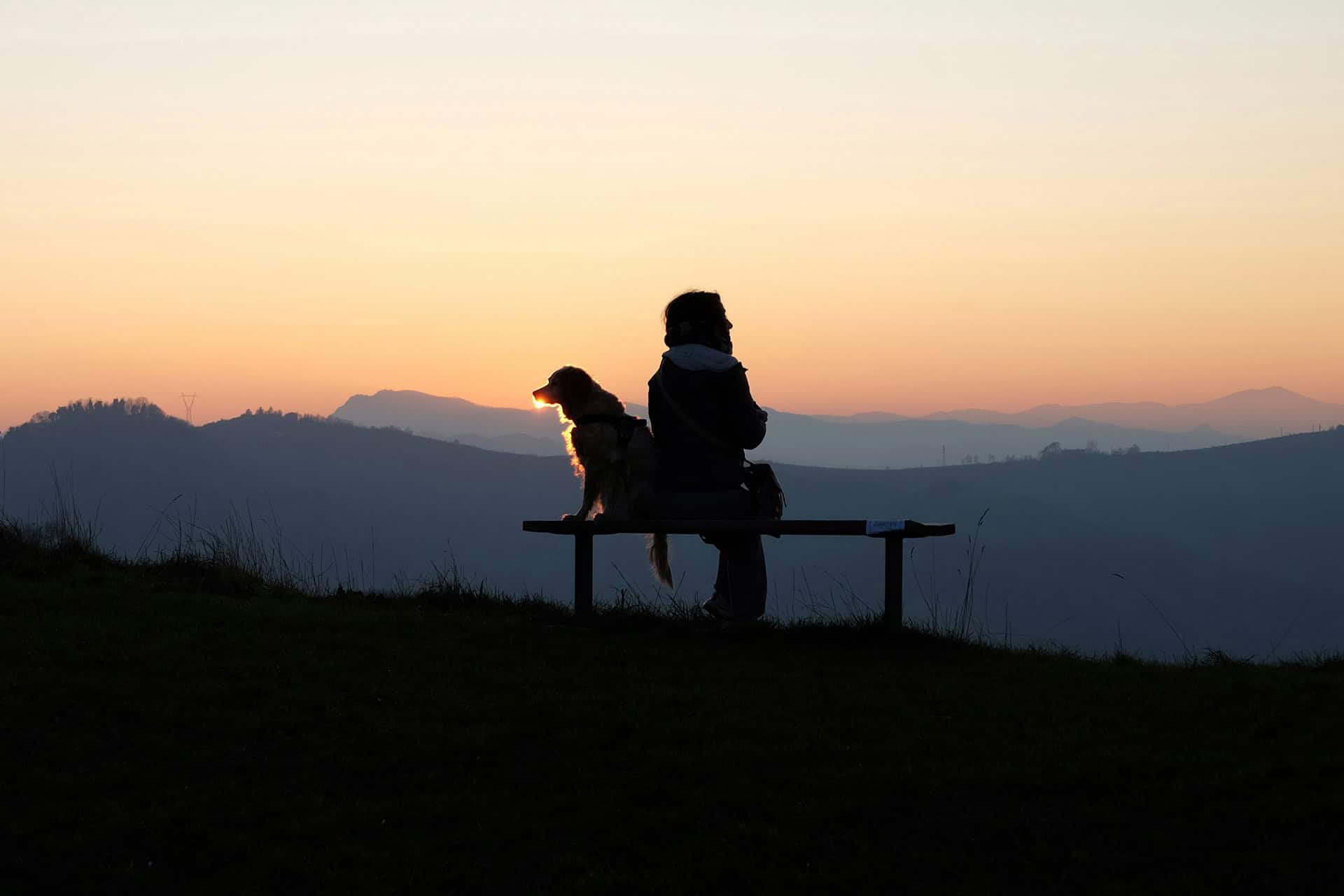









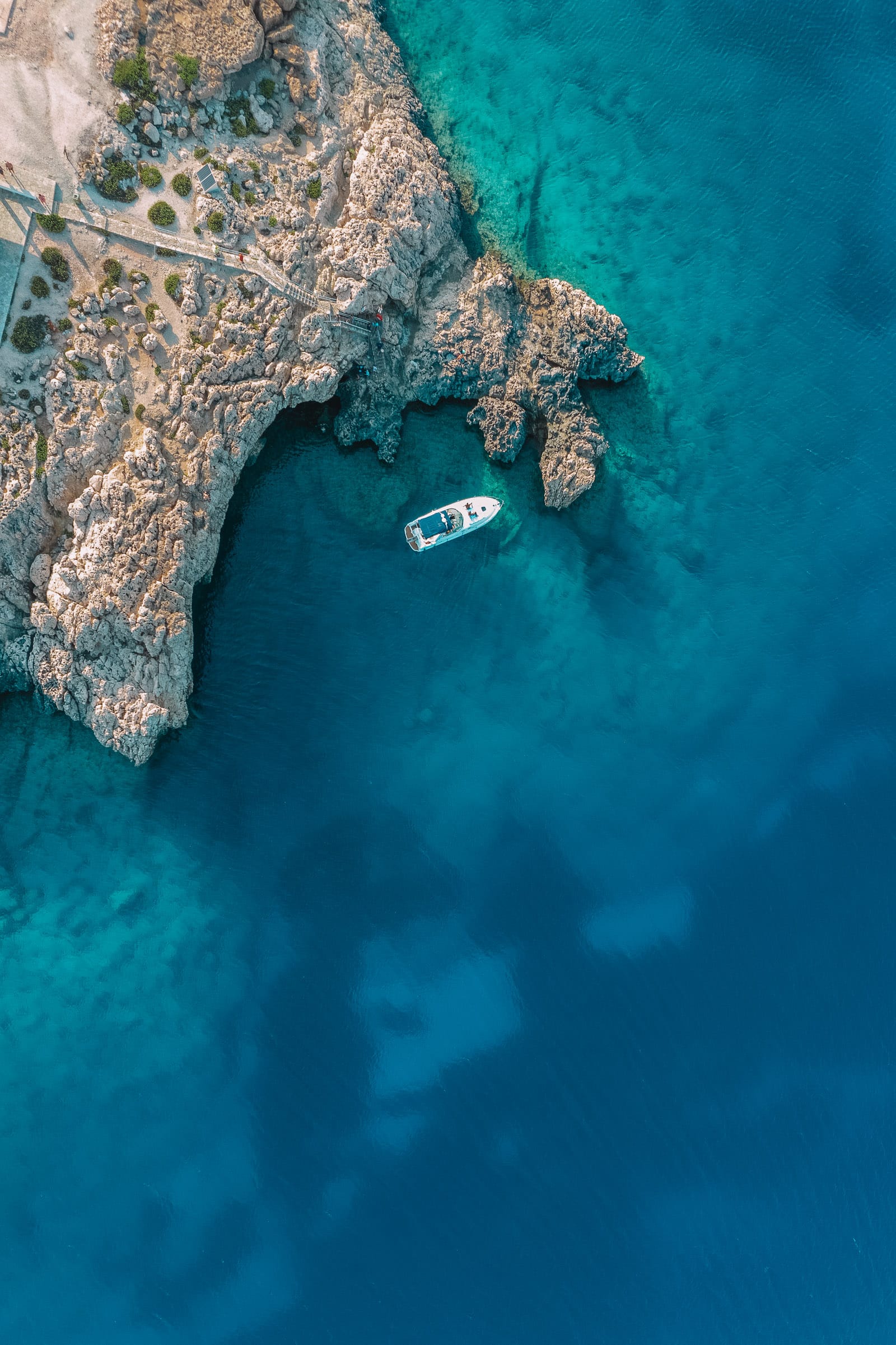

![GoPro HERO 13 Review – The Ultimate Camera Guide [2024]](https://www.nomadasaurus.com/wp-content/uploads/2024/09/GoPro-HERO-13-Black-Review-Feature-Image.jpg)


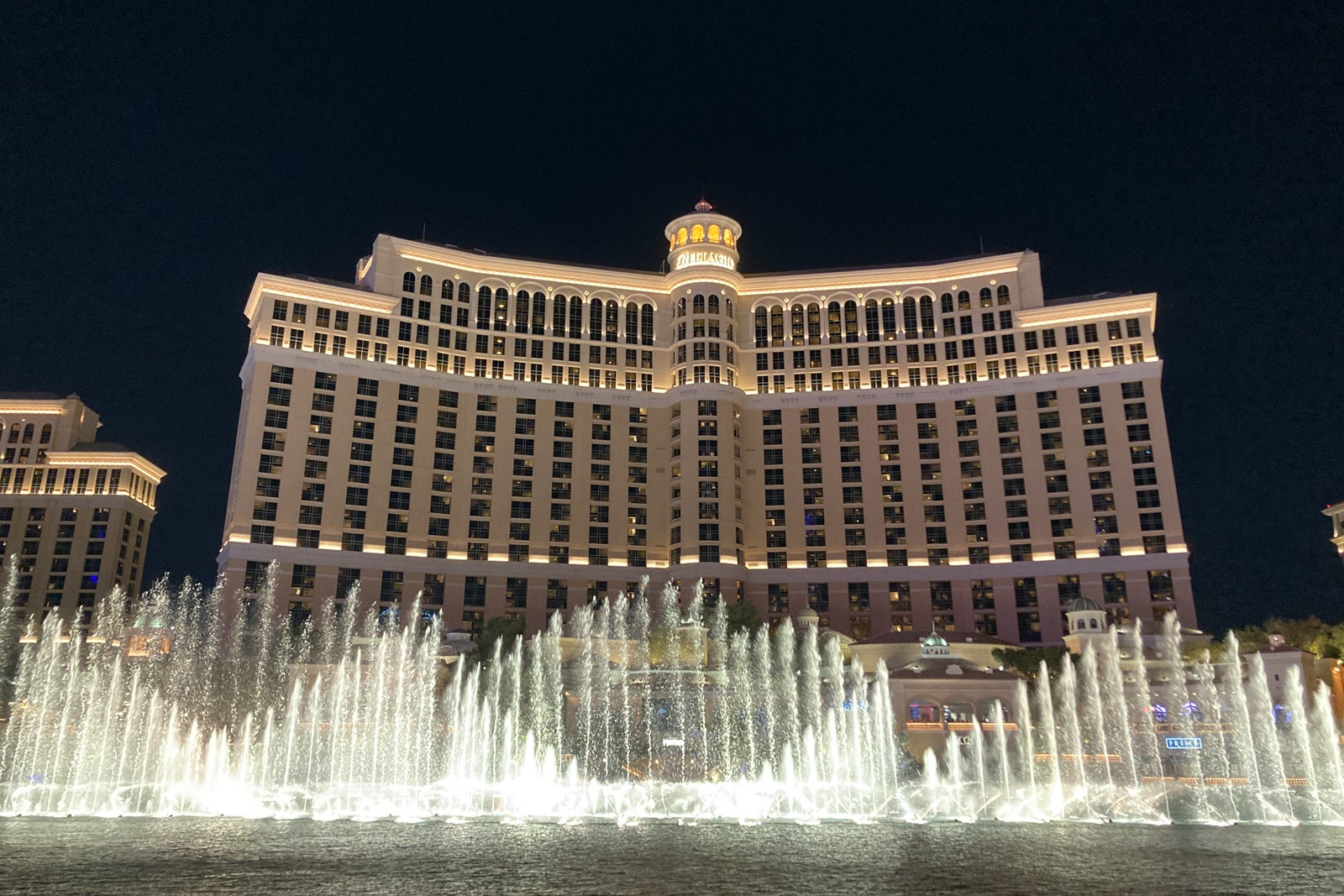


 English (US) ·
English (US) ·